Edwin, Isabella, and Daisy go pheasant hunting. Edwin is determined to make our Reno Home Depot Parking Lot Special of a Rottweiler Chihuahua into a bird dog 🙂


No luck, but they did have fun.
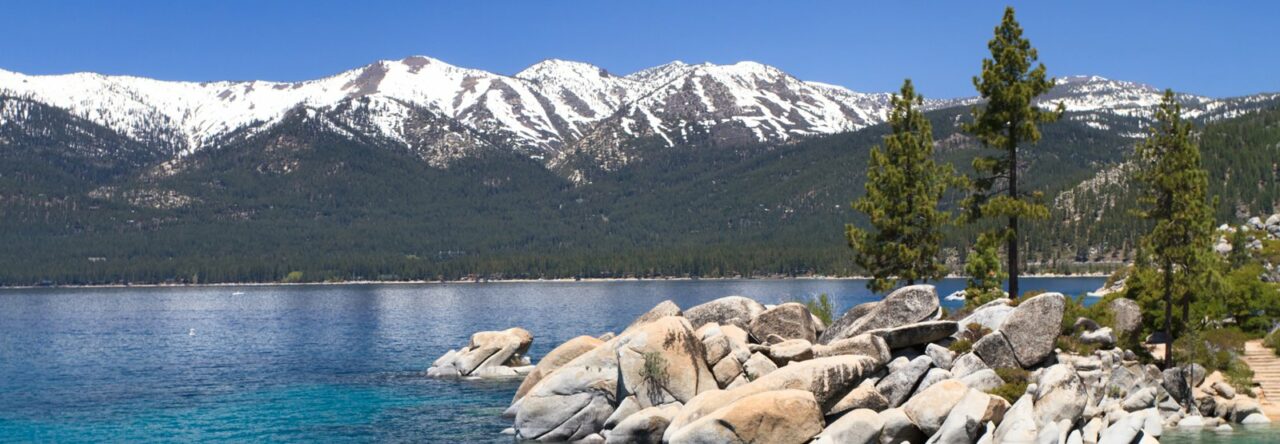
Edwin, Isabella, and Daisy go pheasant hunting. Edwin is determined to make our Reno Home Depot Parking Lot Special of a Rottweiler Chihuahua into a bird dog 🙂


No luck, but they did have fun.
Ugh. I’ve been delaying this post. There is a lot of difficult Native American History in general and a lot of the Plains Indians history is in this area. And I’m learning a lot of it now. I knew stories in general, but never with any real understanding. I know I’m far from that still, but feel like I’m finally piecing things together. We watched “Bury my Heart at Wounded Knee” last night with the kids. It was hard, they cried, but I feel like if they are old enough to watch the violence in Marvel movies, they can and should watch this kind of violence as well. It’s good to have perspective. We realized that this was definitely a Hollywood-ized version of the book, but it is a good overview and introduction to the topic and we wanted the girls to understand the importance of when we drove to Wounded Knee Massacre Site and why we were even driving there. It’s worth watching. I ended up staying up well past midnight doing my own research and trying to understand the timeline of what and why this all happened because the movie is not very clear in quite a few areas. Why Sitting Bull is famous? Was he killed at Wounded Knee? If he was the “last stand” for the Lakota and wasn’t willing to adopt the “white ways” why did we see a picture of him with Buffalo Bill Cody in the Wild West Show? Why wasn’t Crazy Horse in the movie. Who is Red Cloud and why do I keep seeing picture of him? What exactly happened at the Wounded Knee Massacre?
Hopefully I provide a timeline with some of the known people from the past and places without inaccuracies. I realize I still have some holes to fill.
It was fitting that as we drove down to the southern entrance of the southern unit of Badlands National Park which is co-managed with the Oglala Lakota Nation, we see the ranger putting up both the American flag and the OglalaLakota flag. The ranger was a 22 yo member of the Oglala Lakota tribe who grew up a few miles south of there in the Pine Ridge Reservation in Porcupine, SD and attended the local school on the reservation.
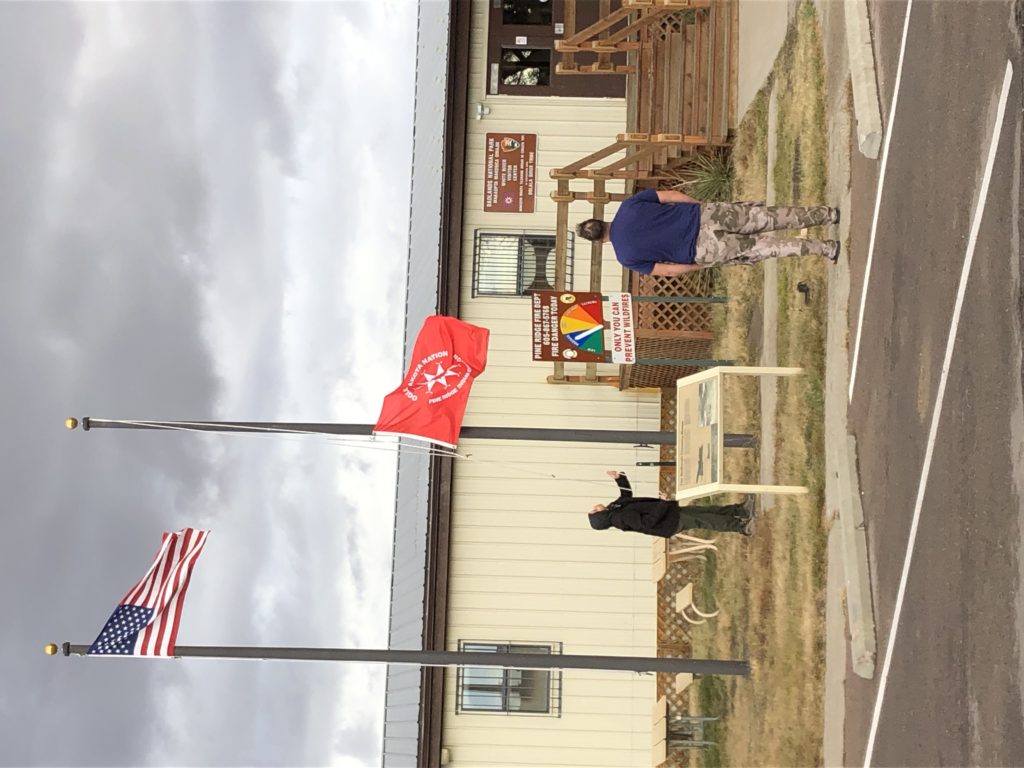
Many Lakota people do consider themselves Sioux Indians. The French gave the name to the Lakota, Dakota, and Nakota people the name of “Sioux Indians”. It is a very large band of tribes crossing a very large area.
Crazy Horse and Chief Red Cloud are a part of the Oglala Lakota people. Red Cloud is a generation older than Crazy Horse. Chief Sitting Bull is part of the Hunkpapa Lakota people and is younger than Red Cloud, older than Crazy Horse. Chief Big Foot is the half brother of Sitting Bull and was also a Hunkpapa.
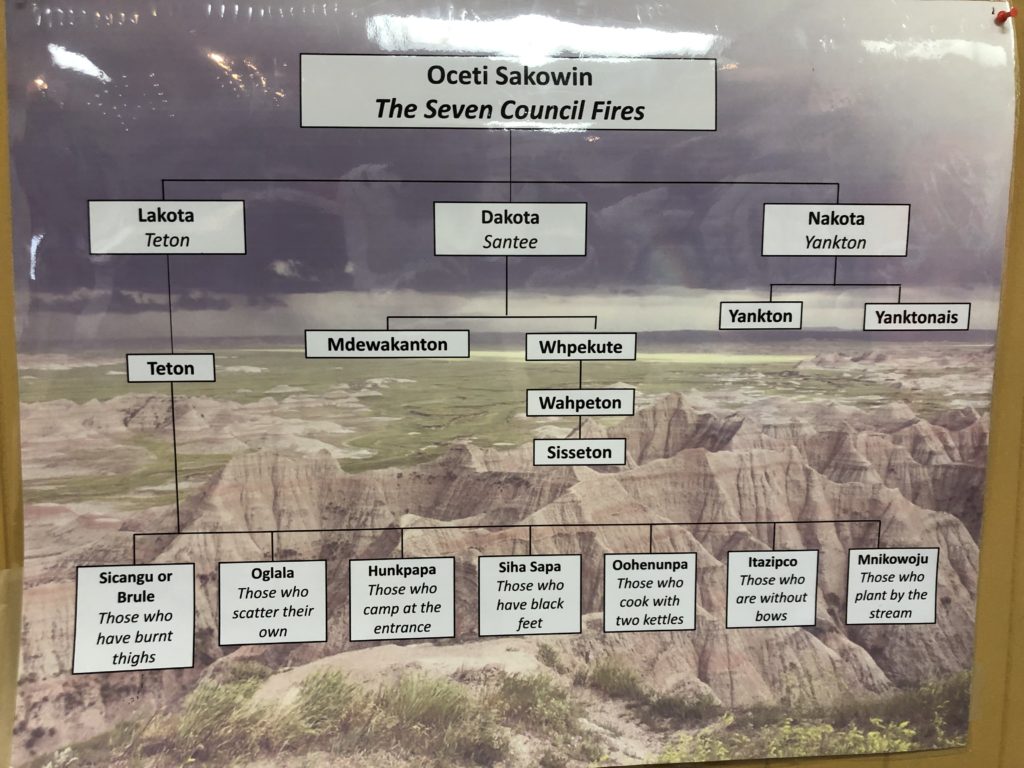
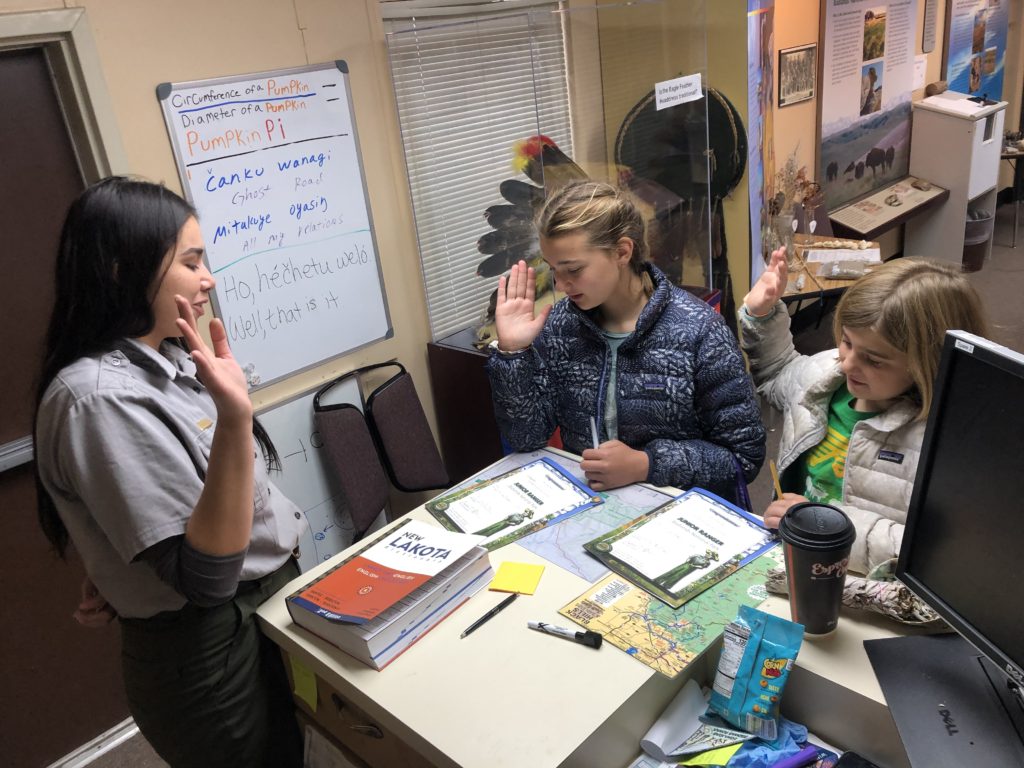
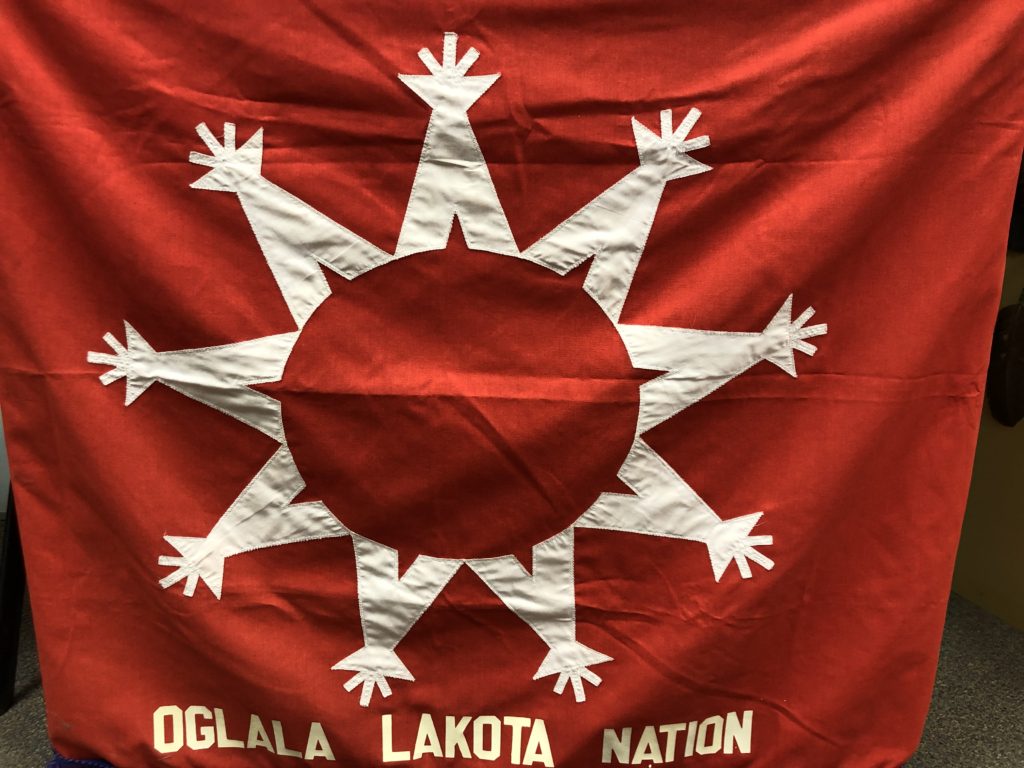
Chief Red Cloud, was born in 1822 and died 1909 in the Pine Ridge Reservation. Of the above “famous Native Americans” he is the only one that died from old age. I don’t know enough of what happened before the Battle of Little Big Horn so I need to stay out of that part of history for now.
What I do know is that Chief Red Cloud fought the U.S. during what was known as the “Red Cloud Wars” 1866-68 led to the Native Americans having the “upper hand” in the 2nd Fort Laramie Treaty of 1968 where the “Great Sioux Reservation”, which included the Black Hills was formed. Both Crazy Horse and Sitting Bull fought in the Red Cloud Wars. Soon after in 1871 Red Cloud tried to help the transition of his people to a different way of life and began living in the “agencies” or the reservations.
In 1874 Gold was found in the Black Hills. In 1875 the U.S. was unsuccessful in purchasing the Black Hills from the Sioux and orders all Indians to report to reservations by January 31, 1876. Any Native not living in a reservation is to be considered a “hostile”. This led to the Great Sioux War of 1876-77.
The Plains Indians were nomadic who followed the bison and living in a home on a reservation went against every part of their culture. Sitting Bull and Crazy Horse are 2 of the most famous Plains Indians who were the last “hold out” for the Lakota way of life. Crazy Horse was considered the greatest warrior during the Battle of Little Big Horn. Sitting Bull was the “medicine man” of the Lakota during this time. The defeat of the U.S. in the Battle of Little Big Horn in June 1876 led the Americans to unleash a much larger force of their military against the “hostiles”.
Crazy Horse formally surrendered in May 1877, but was killed in August 1877 with a bayonet by Indian Military Police.
Sitting Bull refusing to surrender led a band of Lakota north to Canada in May of 1877. The lack of bison up north and the limited land they were given by the Canadian government he returned to the U.S. and formally surrendered in July 1881. “Sitting Bull said to Brotherton at Fort Buford, “I wish it to be remembered that I was the last man of my tribe to surrender my rifle.” To the Oglala Lakotas, Dakotas and Nakota, “to surrender my rifle” in this context meant “We have killed enough white men with your own rifles so I give this rifle back to you”.
In 1885 Sitting Bull joined Buffalo Bill and the Wild West Show for 1 season.
During these years living on reservations the health and culture of the Native Americans had catastrophic changes. Their emotional and physical health had been deteriorated. Agreed upon rations were cut and disease ravaged through. Attempting to live like the “whites” was not working for them.
In response, a new movement started, the Ghost Dance Movement. It called on the Indians to dance and chant for the white man to disappear, the rising up of their deceased relatives, and the buffalo to disappear. This movement scared the white people into thinking that the Native Americans would leave the reservations and begin a new war.
The Indian military police went to go arrest Sitting Bull because he was very much a respected elder within the reservation and didn’t want him encouraging the Ghost Dance Movement and there was a rumor he would leave the reservation. During the arrest Sitting Bull fought against the arrest and was shot twice and died. Sitting Bull was shot and killed on December 15, 1890.
The band of Hunkpapa Lakota who was living with Sitting Bull feared retaliation because 2 officers were also killed. They fled west to Chief Big Foot and along with Chief Big Foot and his band they all fled south to join Chief Red Cloud south in the Pine Ridge Reservation, crossing the badlands. Chief Big Foot was fighting pneumonia. They were captured and they surrendered at Wounded Knee.
The next morning on December 29, 1890 the U.S. cavalry placed 4 Hotchkiss Mountain Guns around the camp. The U.S. wanted to “disarm” the Indians. The story is that a “deaf tribesman reluctant to give up his rifle because he had paid a lot for it”. The rifle went off and the massacre ensued. The U.S. killed all 250-300 men, women, and children. It was a massacre. Half the Indians were shot close range within a very short period of time. The U.S. used the Hotchkiss guns on everyone, including the white people. Many women and children had run for cover. The military hunted everyone down. Bodies were found days later over 2 miles away from the original site. There was a blizzard the next 3 days and they were only able to return later to collect the bodies.
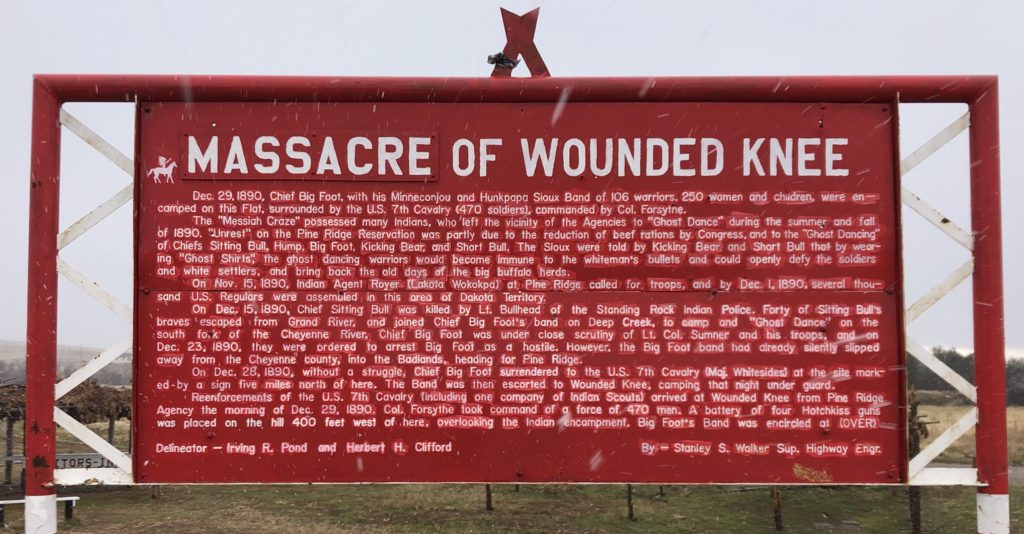
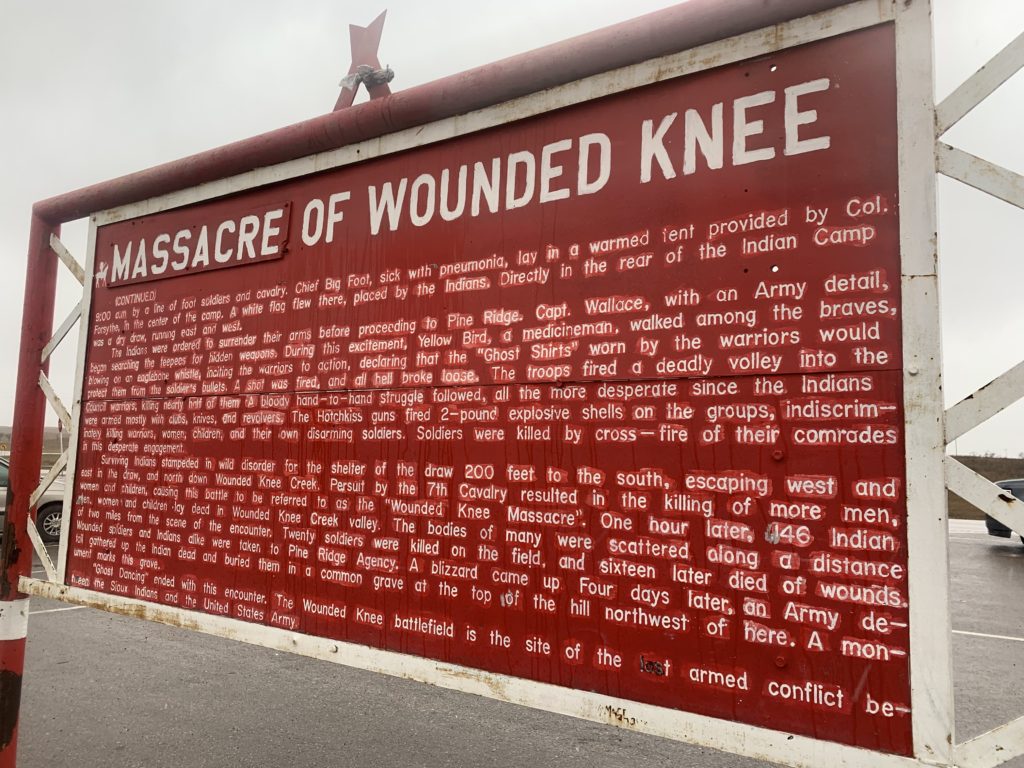
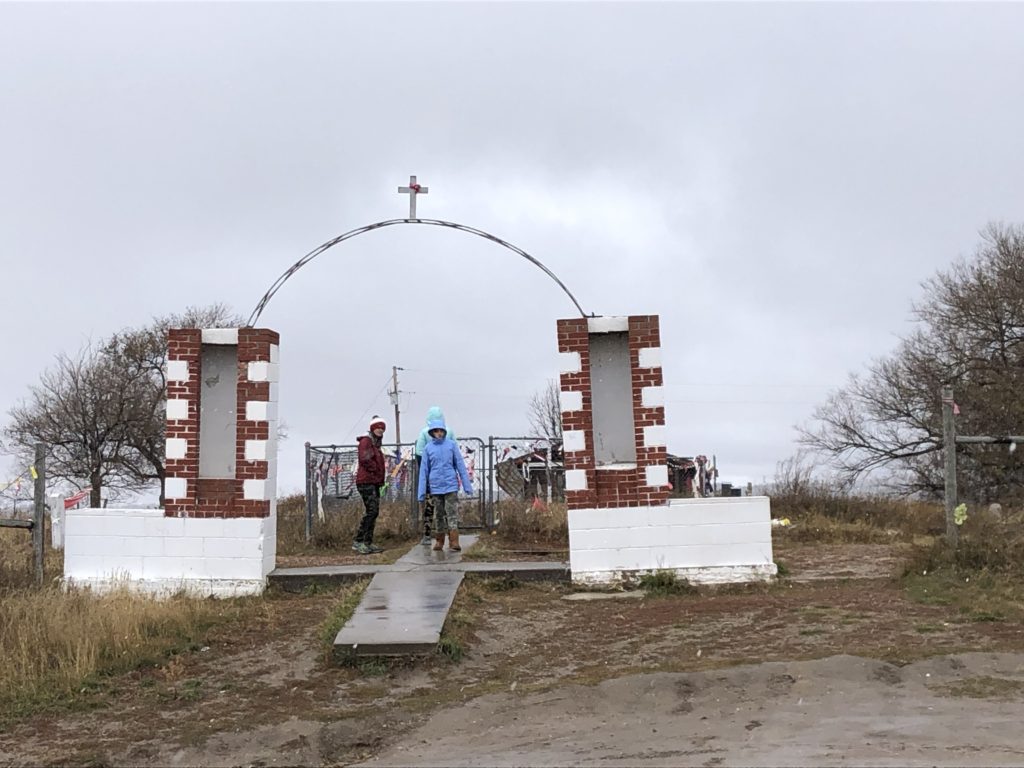
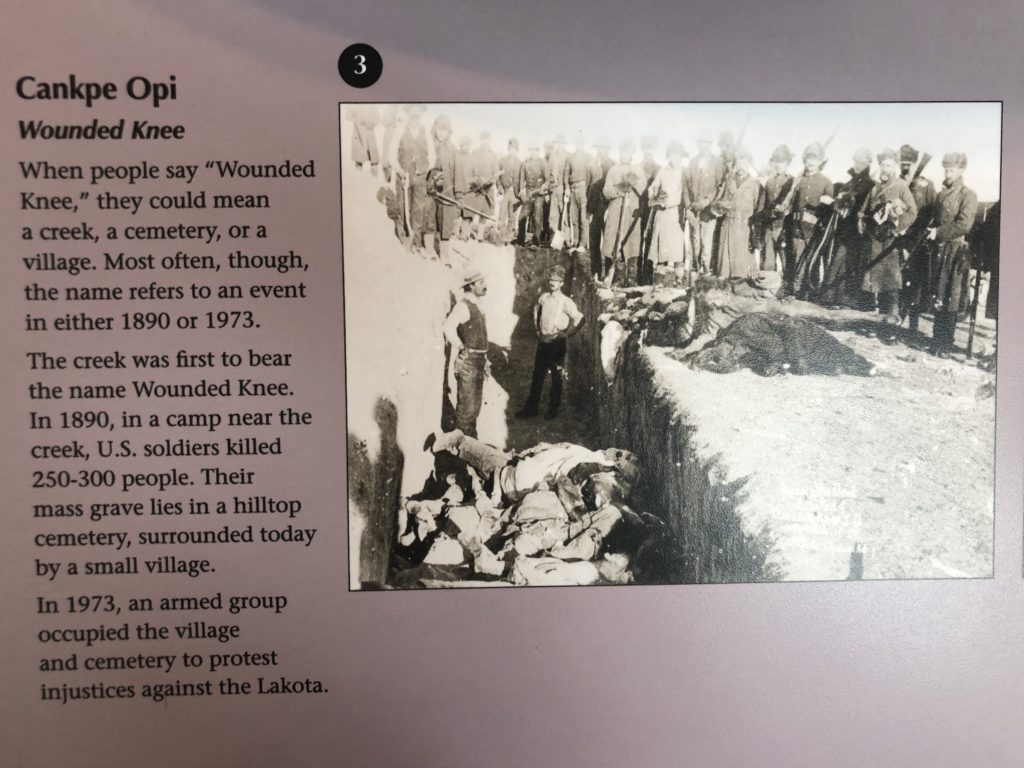
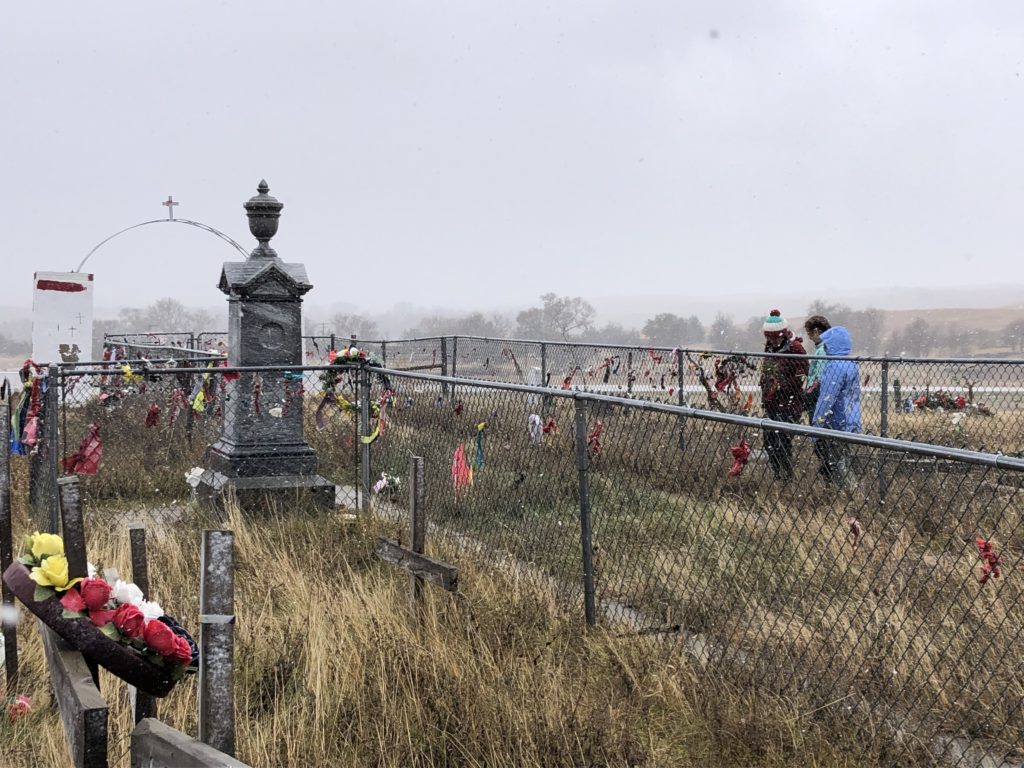
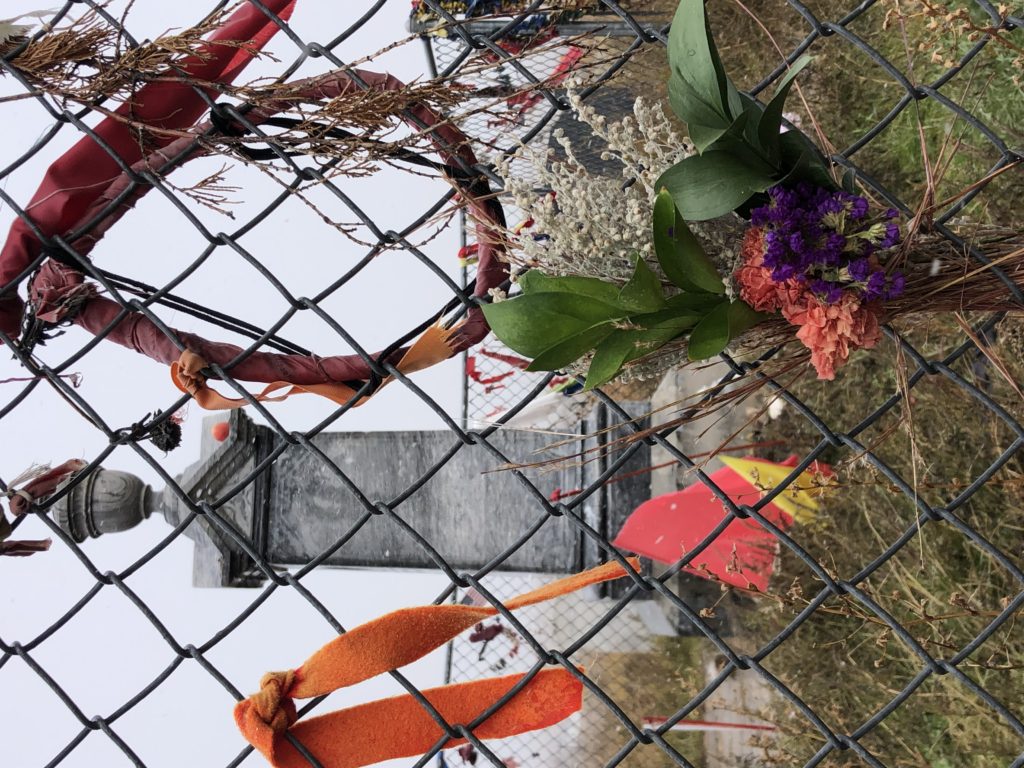
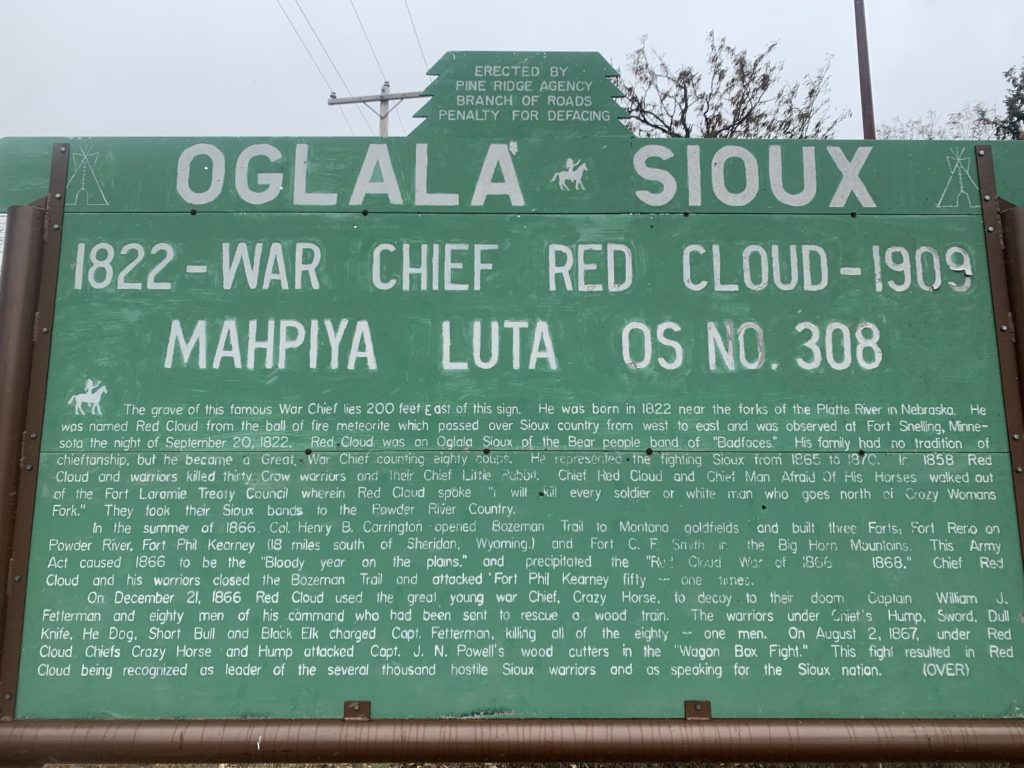
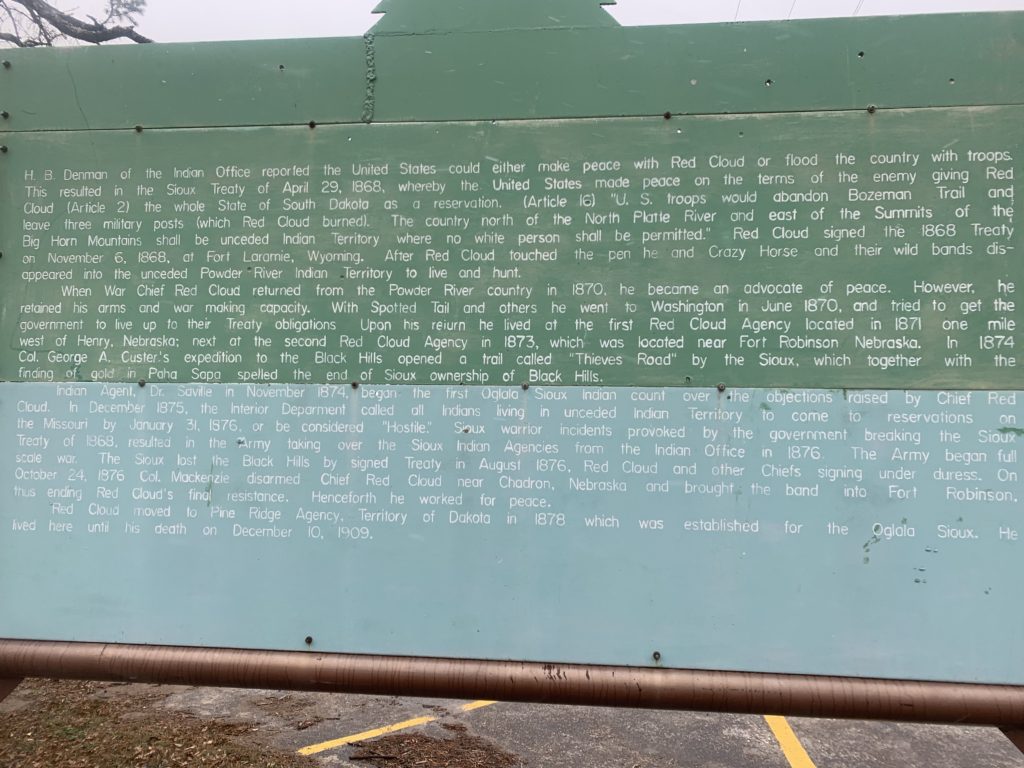
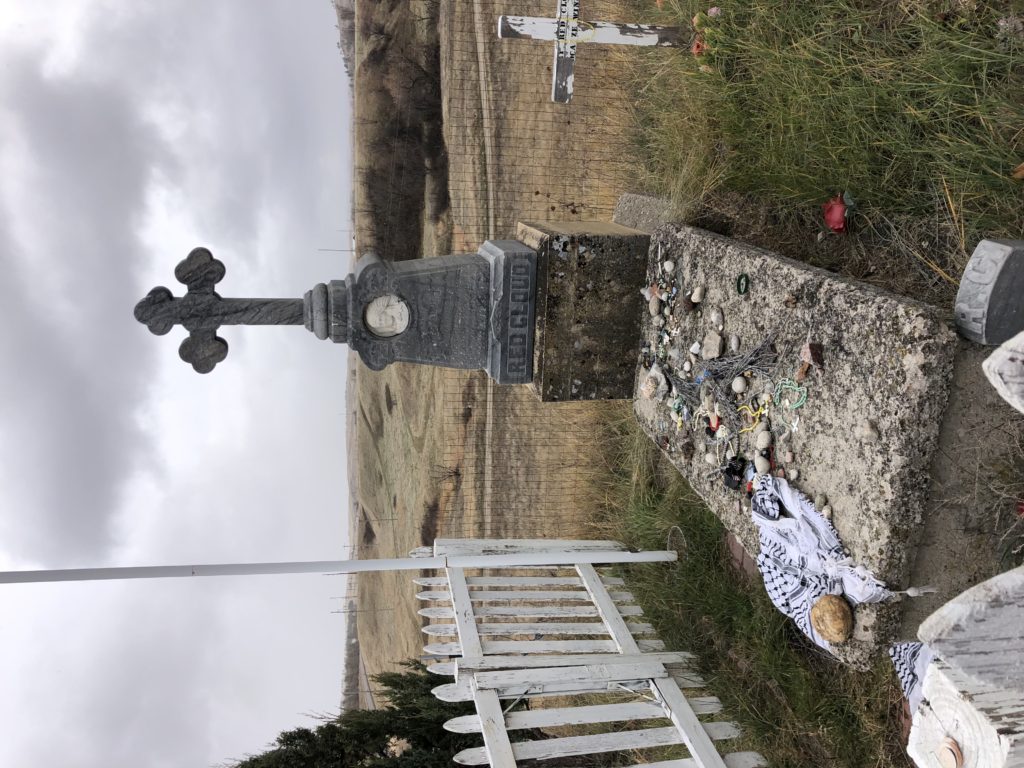
As I’m writing this I’m really not happy with how I’m explaining this now, I may have to come back to this post, but its too late for me to think properly right now…but I highly recommend the book Bury my Heart at Wounded Knee.
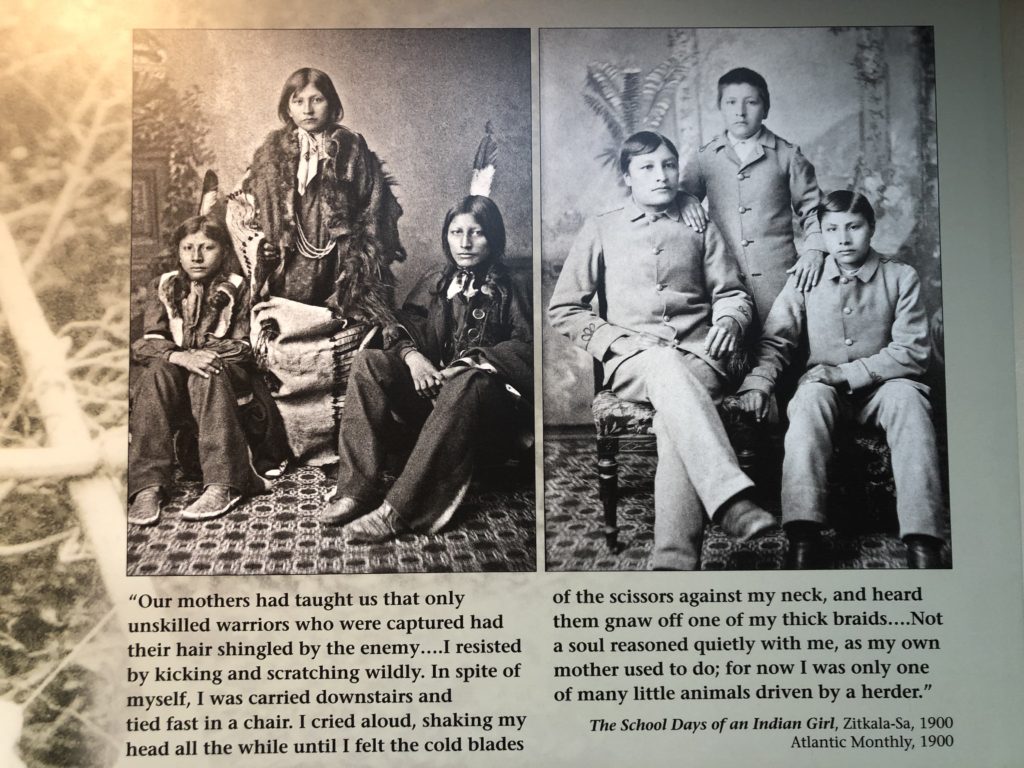
Badlands National Park. 9th National Park.

Badlands geology in short…2 words… Deposition & Erosion.
This hills of the badlands are sedimentary rock. Layers of sand, silt, clay, and volcanic ash from the west have been deposited over the last 75 million years, dating back to the dinosaurs. It is easy to look at the hills and see the layers of sediment that have been deposited over time. In fact this national park is easy to see the Law of Superposition which can be easily described as the oldest rock is on the bottom and the youngest rock is on top.
As the layers of sediment and minerals harden over time, they are subject to erosion. About 500,000 years ago erosion took over as the main geologic process. Erosion from wind and water. In fact the badlands are eroding at a rate of about 1” a year and the badlands may no longer be present in another 500,000 years.
Pretty sure Edwin’s spirit animal is the Bison.
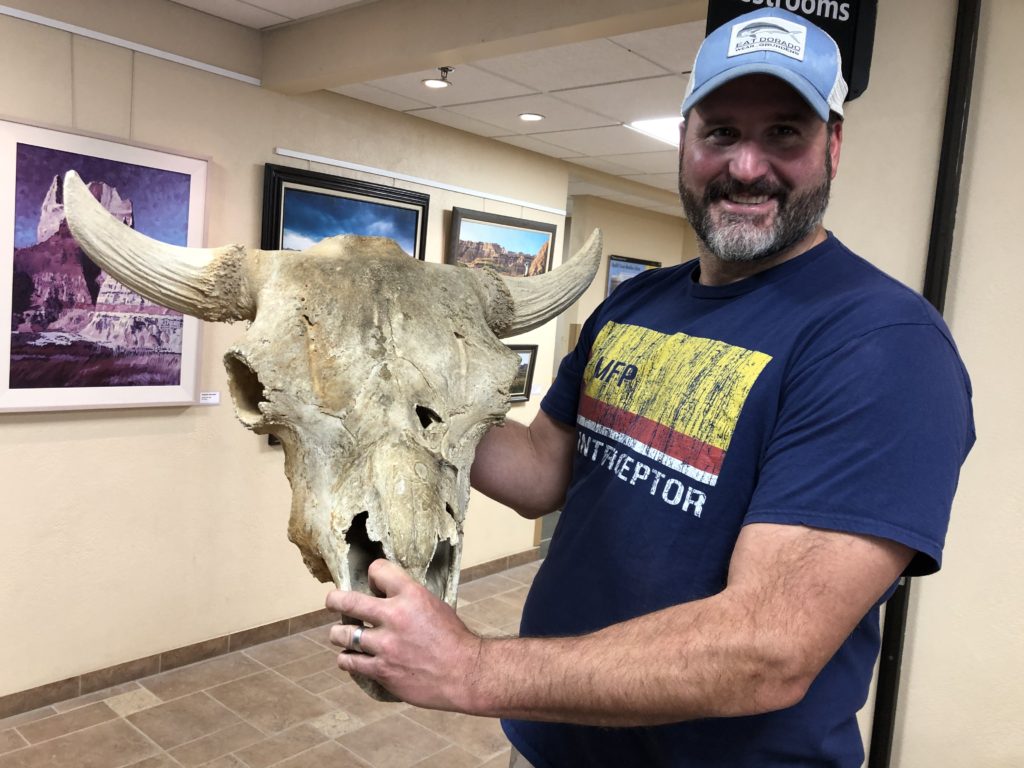
The horns from the bighorn sheep are huge. Can you guess how much one would weigh?
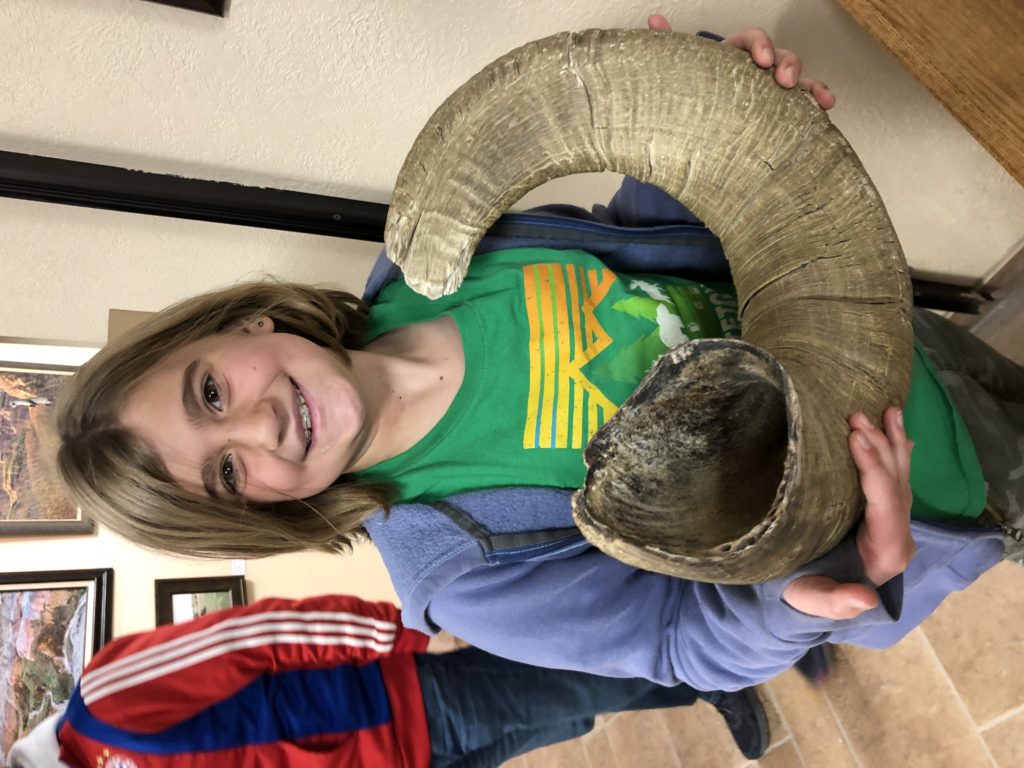
The one Vera is holding is 22lbs. They can get up to 30lbs. Their horns weigh more than all their bones together. Imagine wearing 40-60lbs of horns on your head. If you ever wear a motorcycle helmet, your neck can get sore from 2lbs on your head by the end of the day.
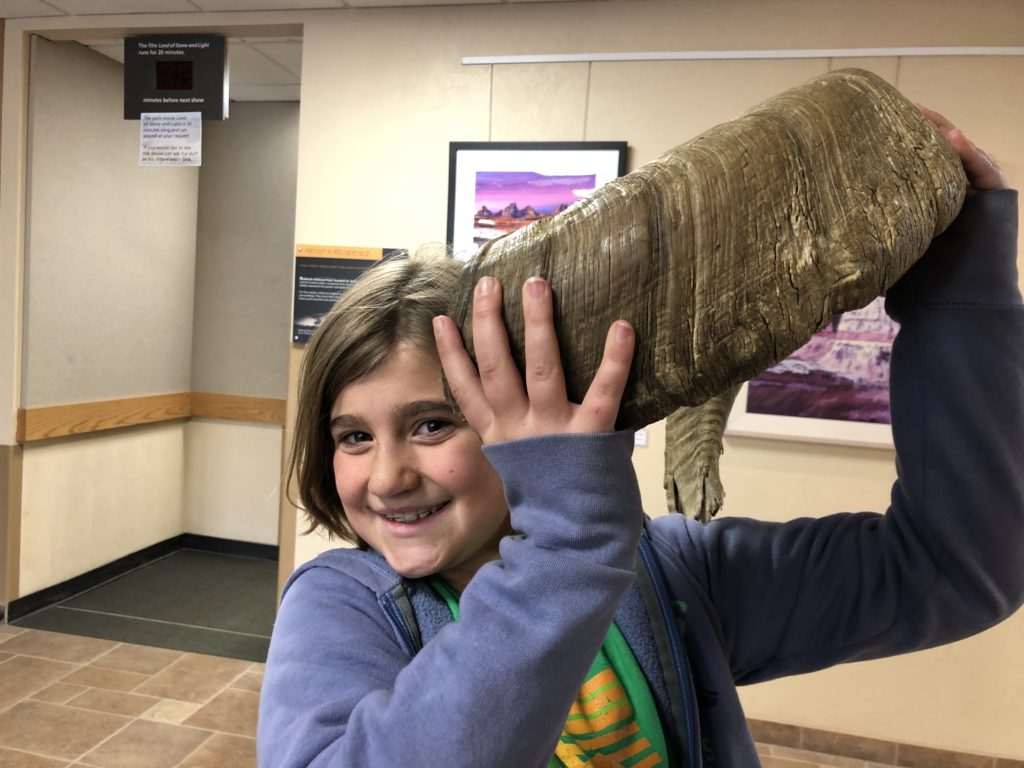
Vera was really good at spotting the bighorn sheep
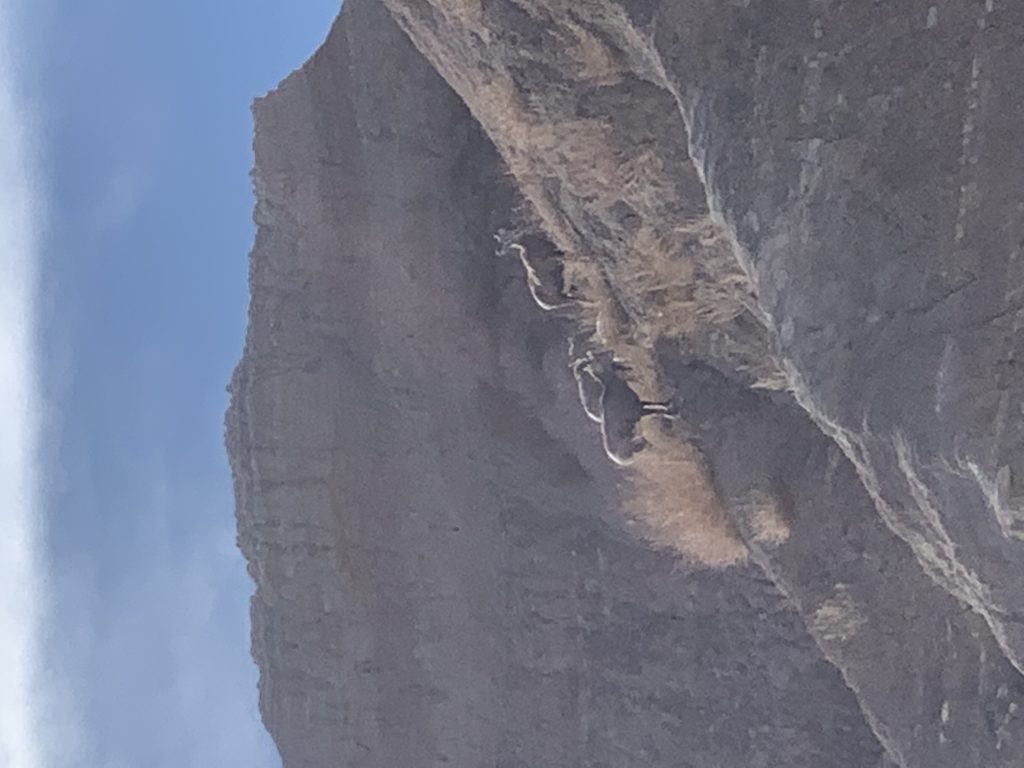
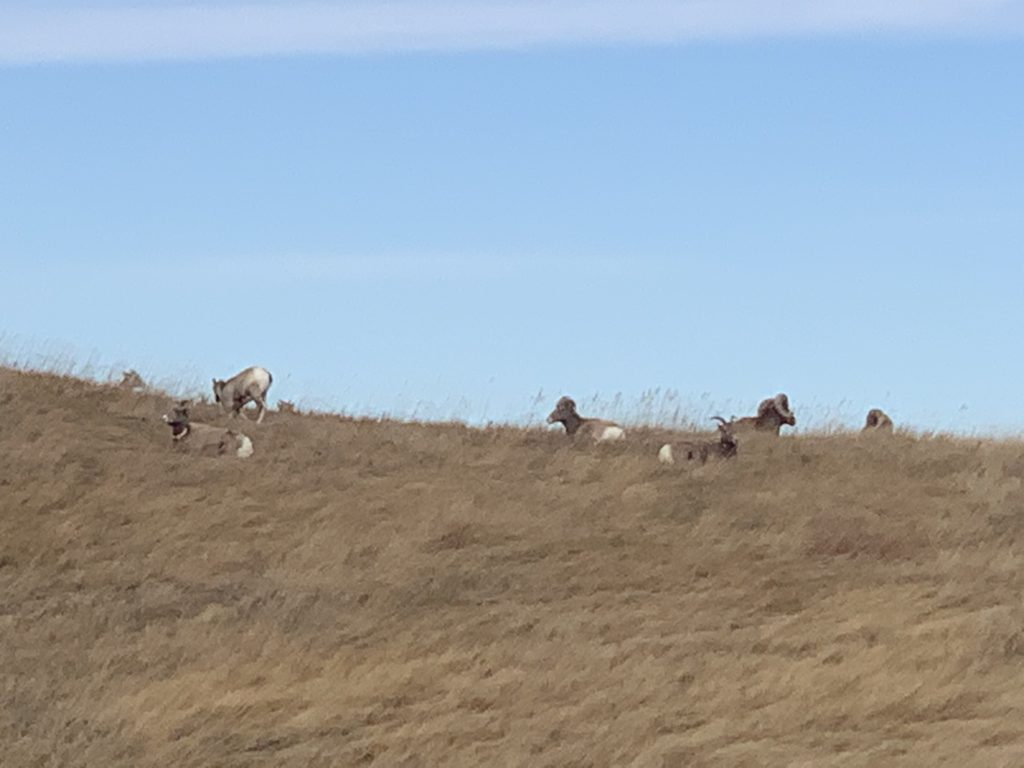
The Notch Trail
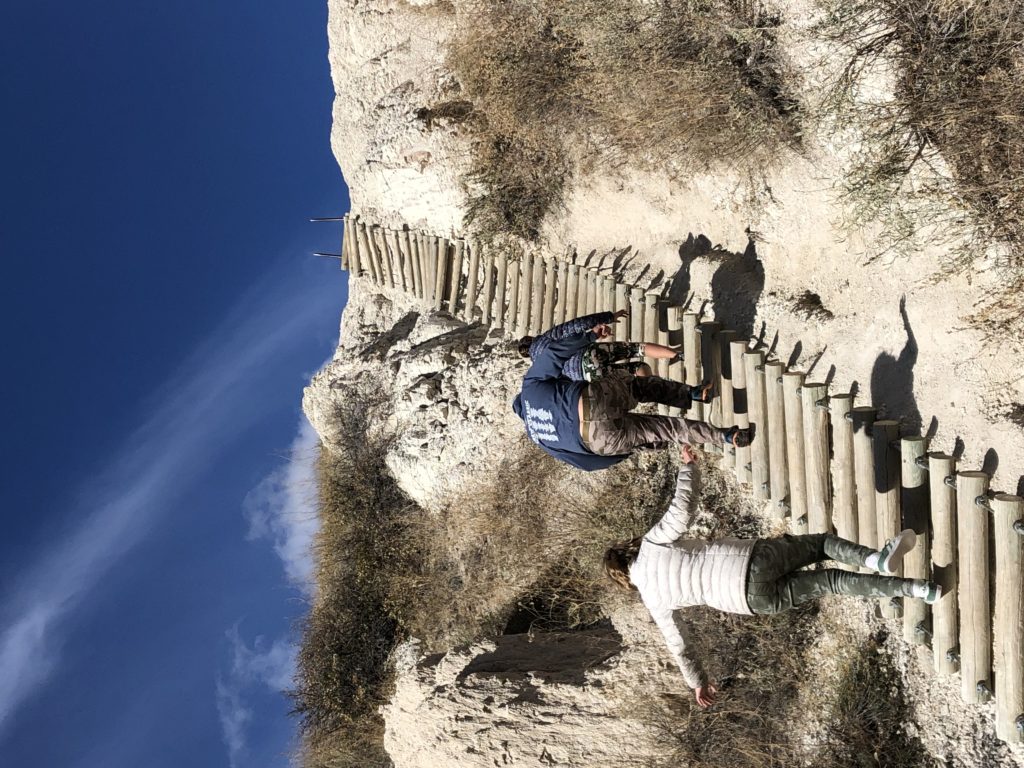
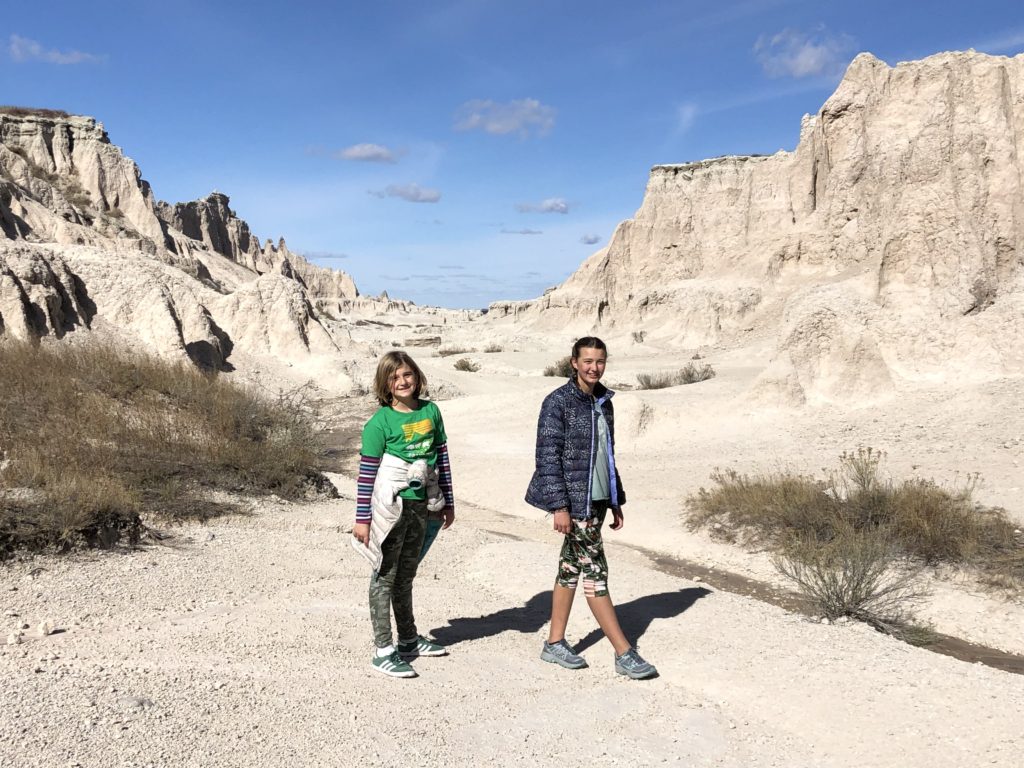
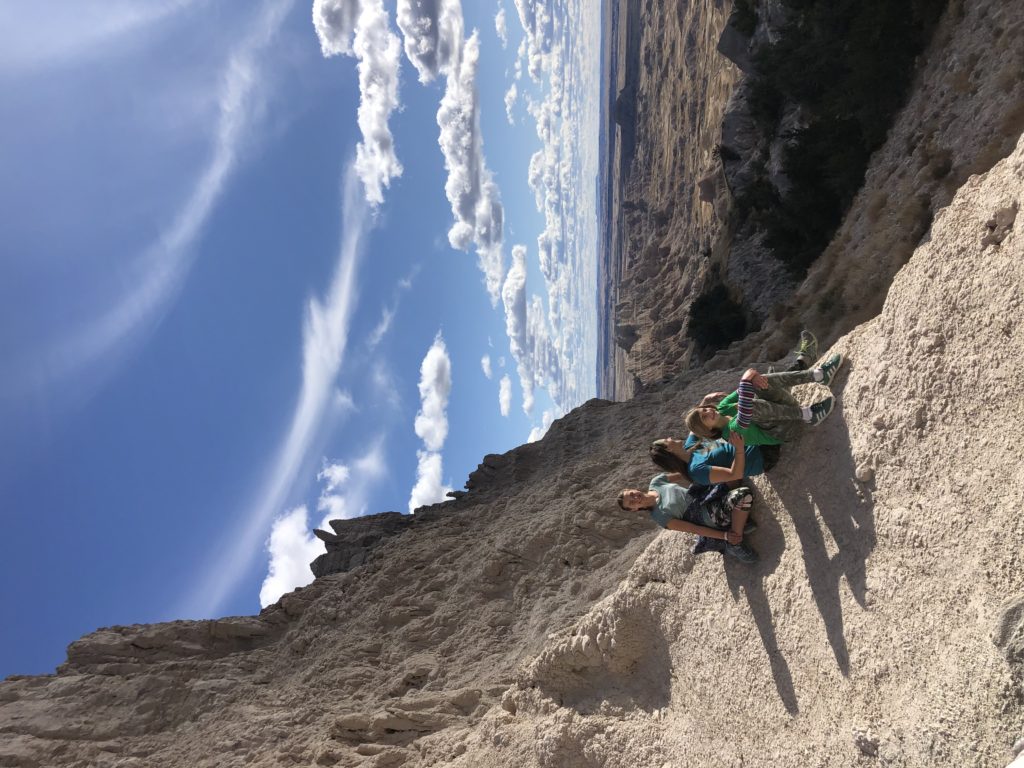
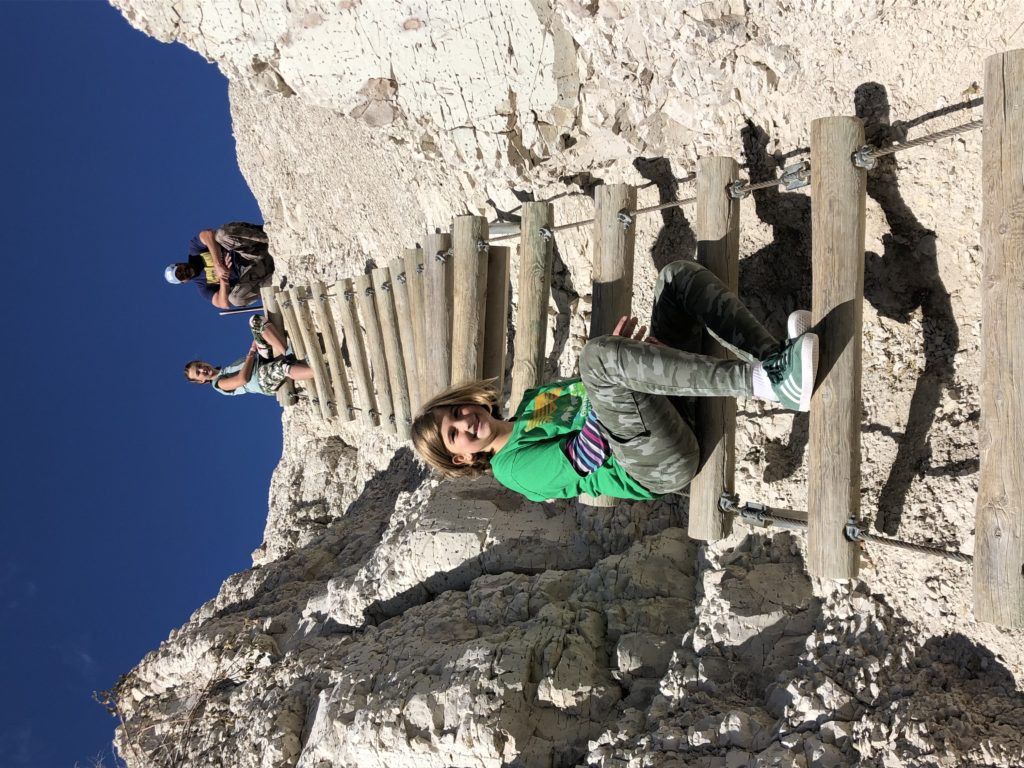
The badlands…
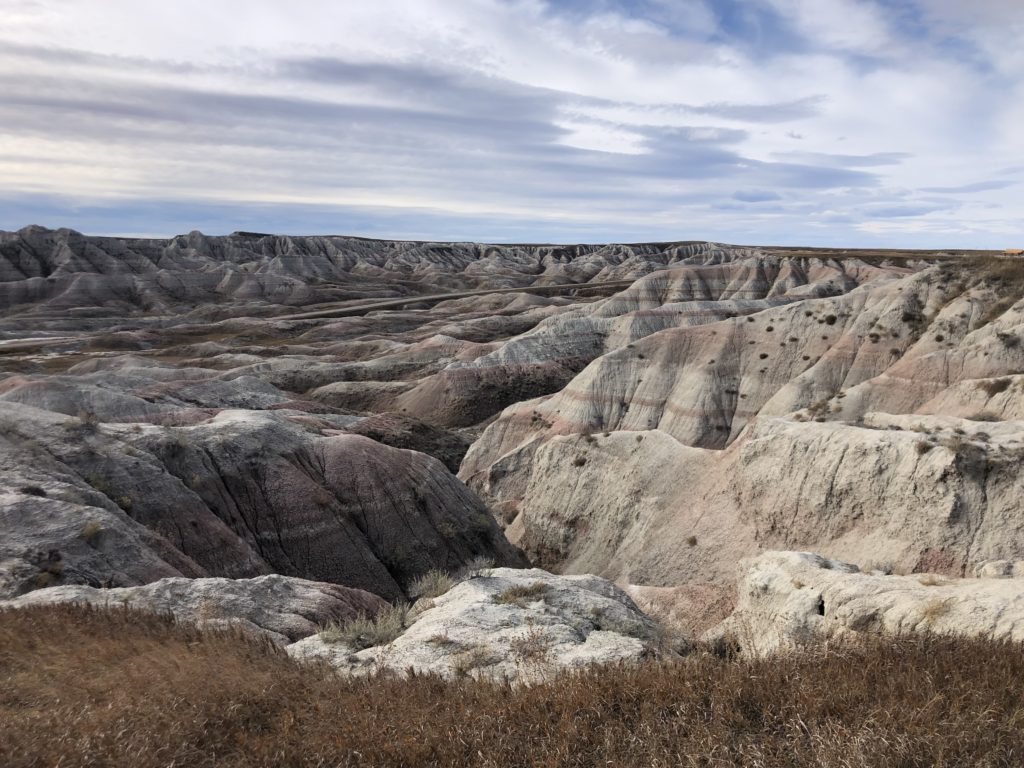
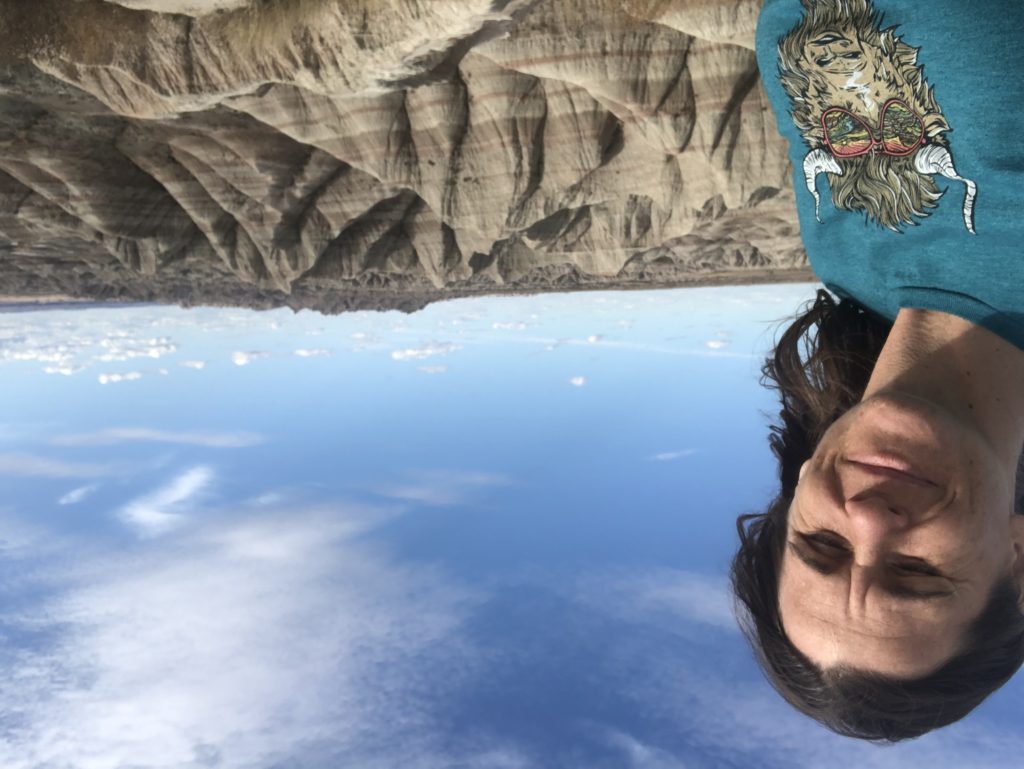
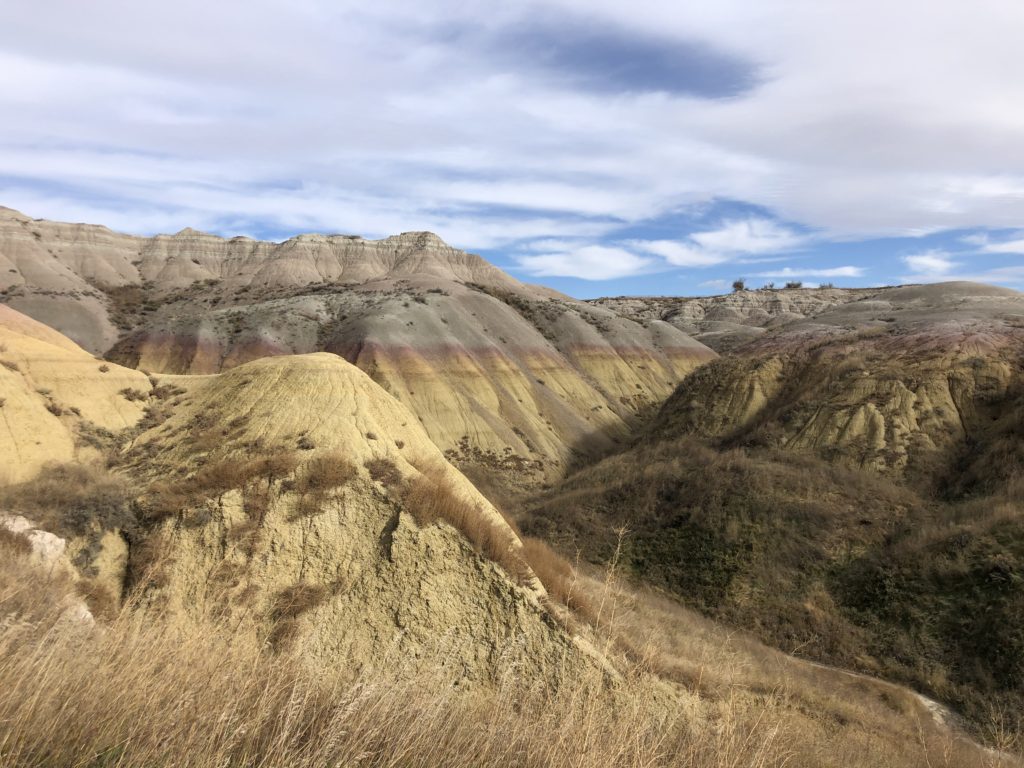
The northern part of the badlands are right near Hwy 90 so we ran up to go see the Minuteman Missile and Wall, South Dakota which supposedly has a must see 20,000 sq.ft. drug store with a jackalope and 5 cents coffee.
The Minuteman Missile 09 site houses a 68 ton missile implemented during the Cold War. It had 200 x the power of Hiroshima and Nagasaki combined and could be detonated from anywhere including any plane that had the correct radio frequencies. It could even withstand a direct attack. The door is 90 tons itself. It was put here because South Dakota was considered to have a low enough population so if there was a counterattack there would be low casualties. It is NOT active now.
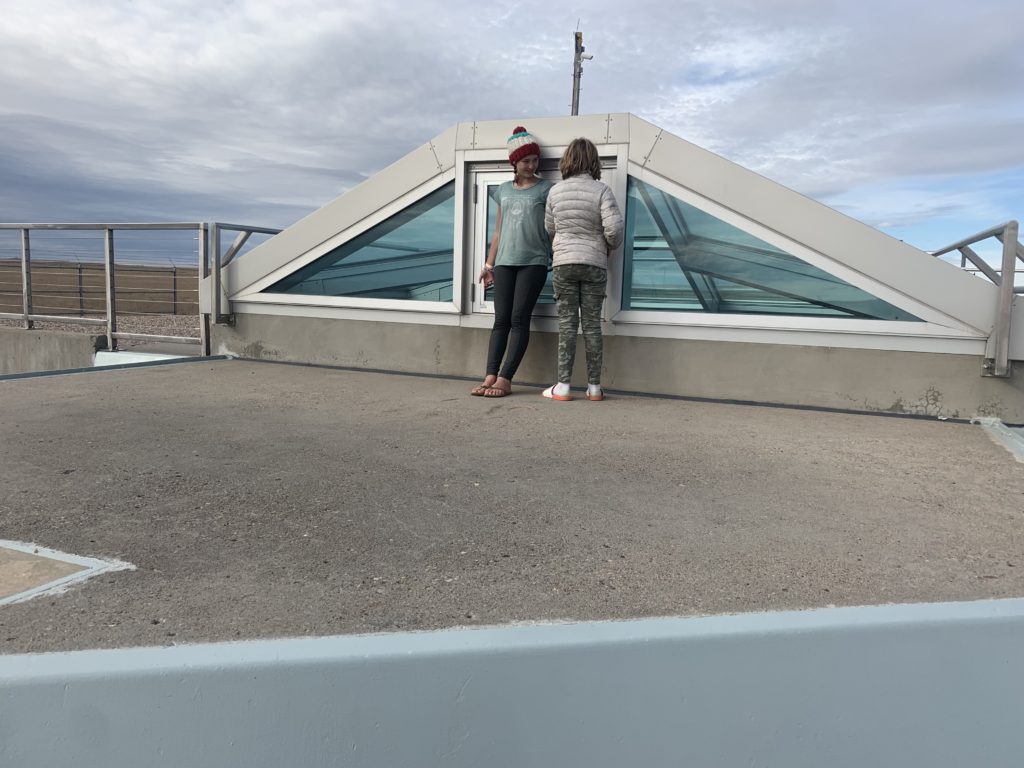
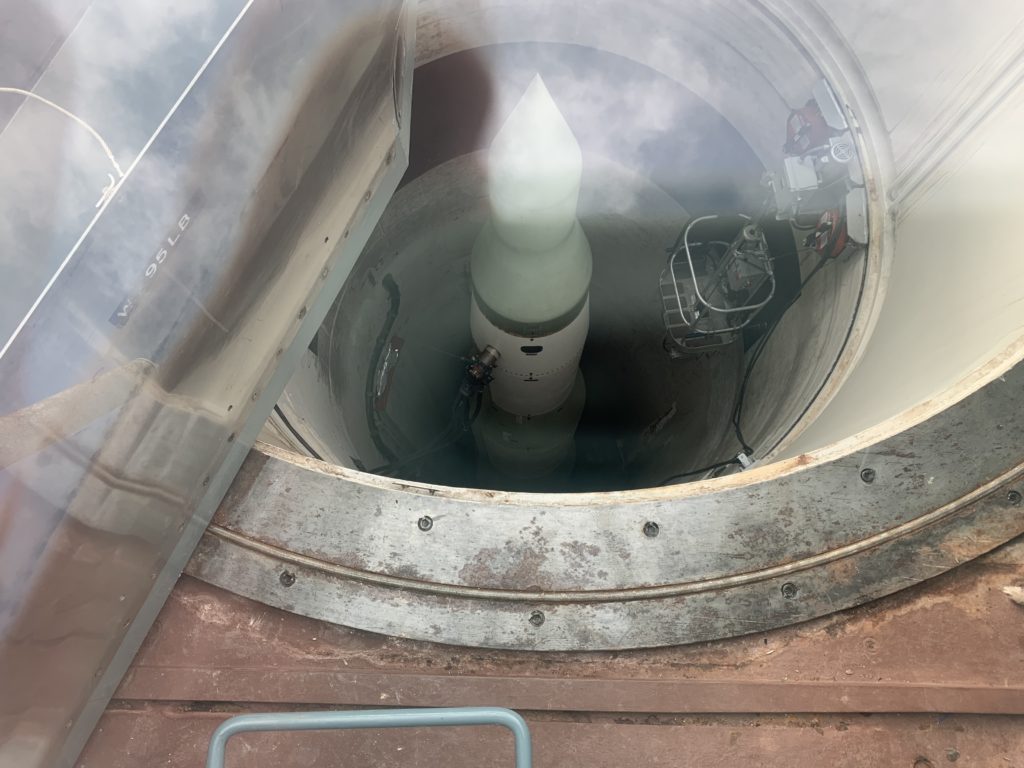
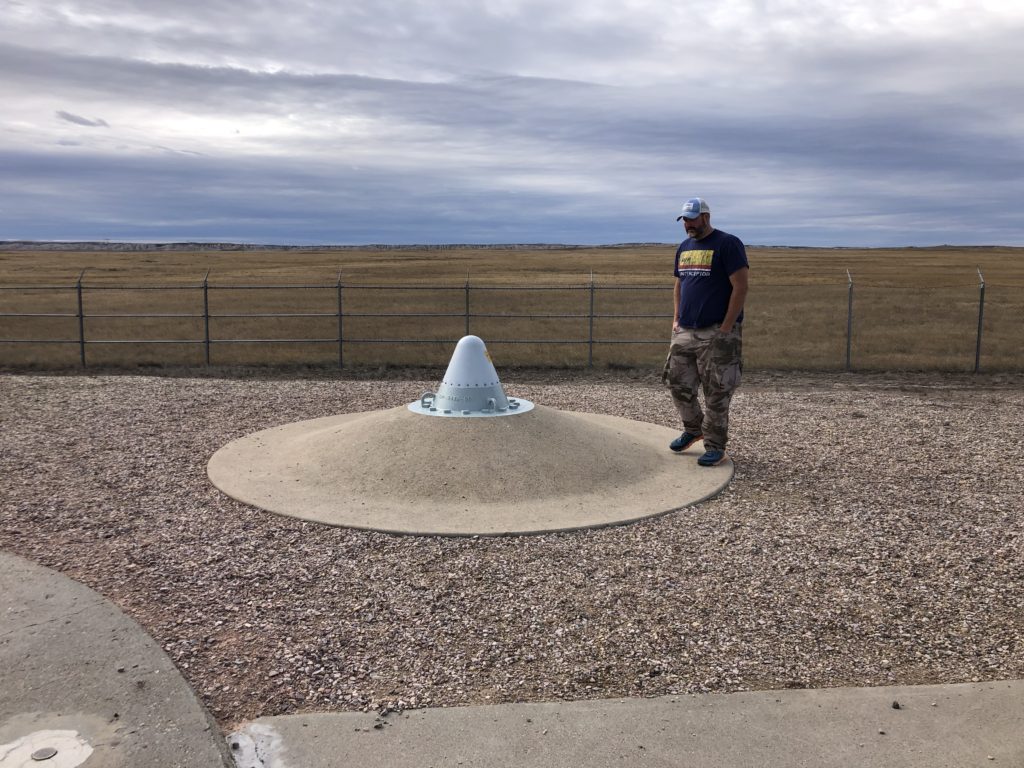
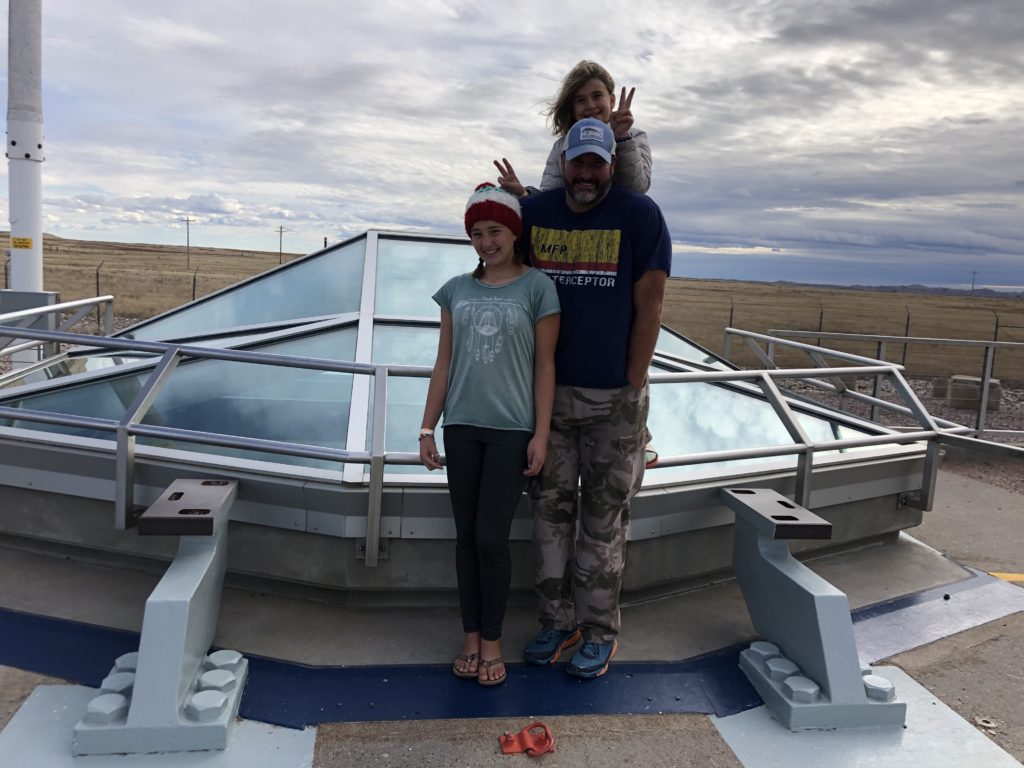
Wall, South Dakota.
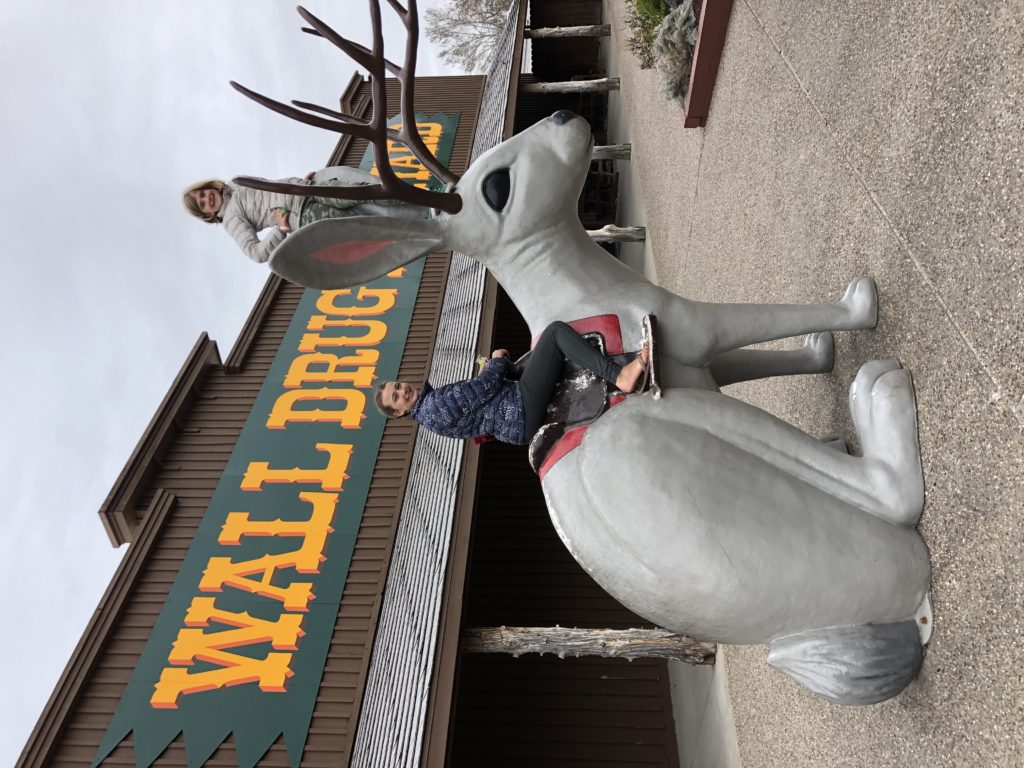
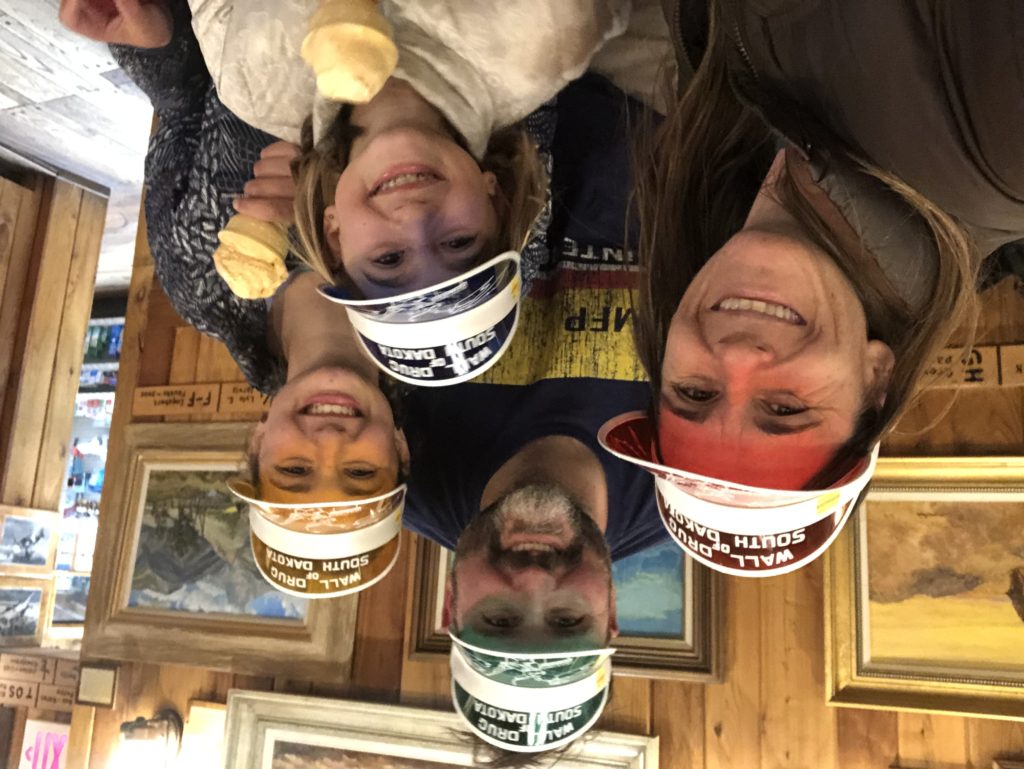
Back into the badlands to explore the mud some more and camp.
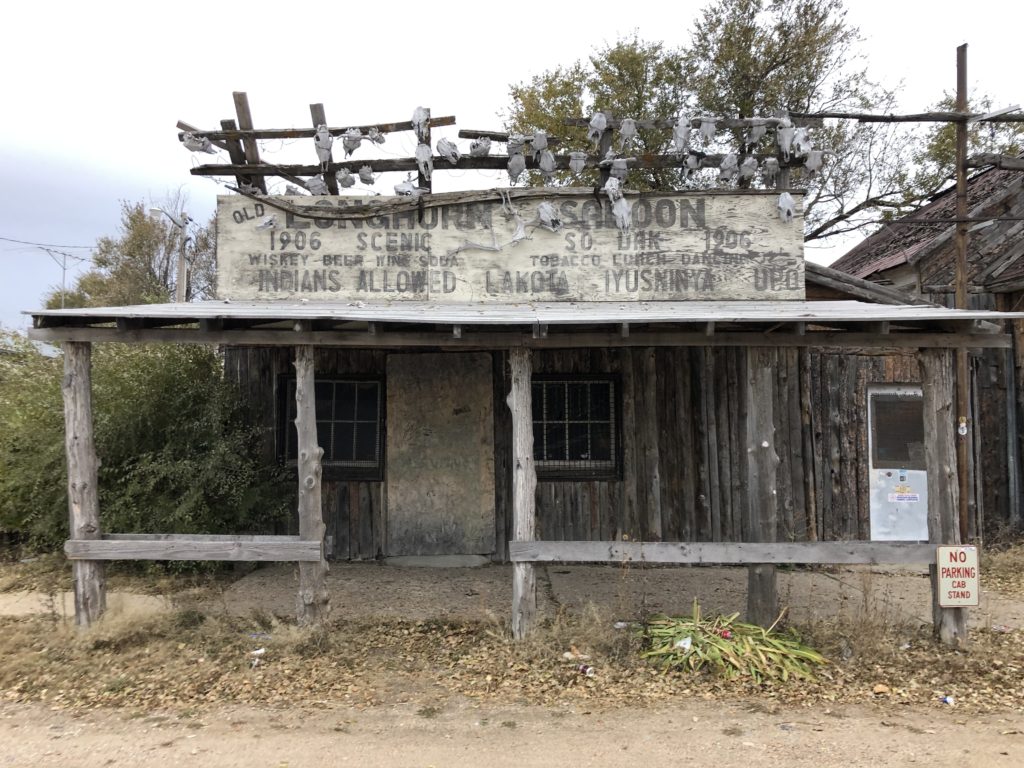
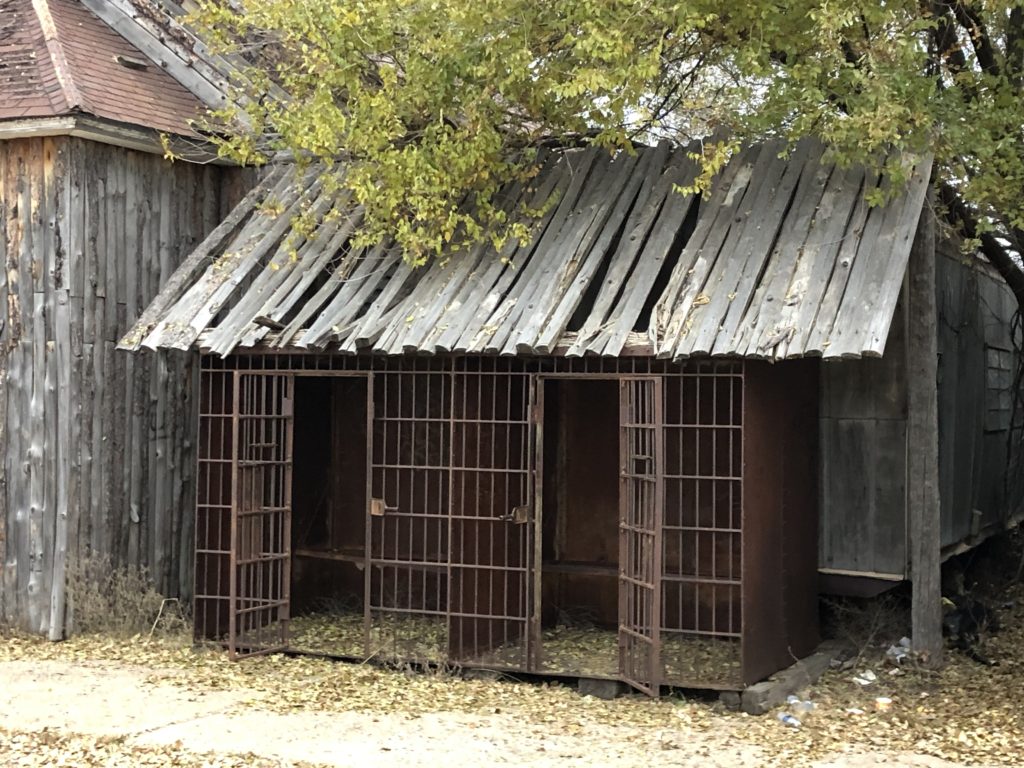
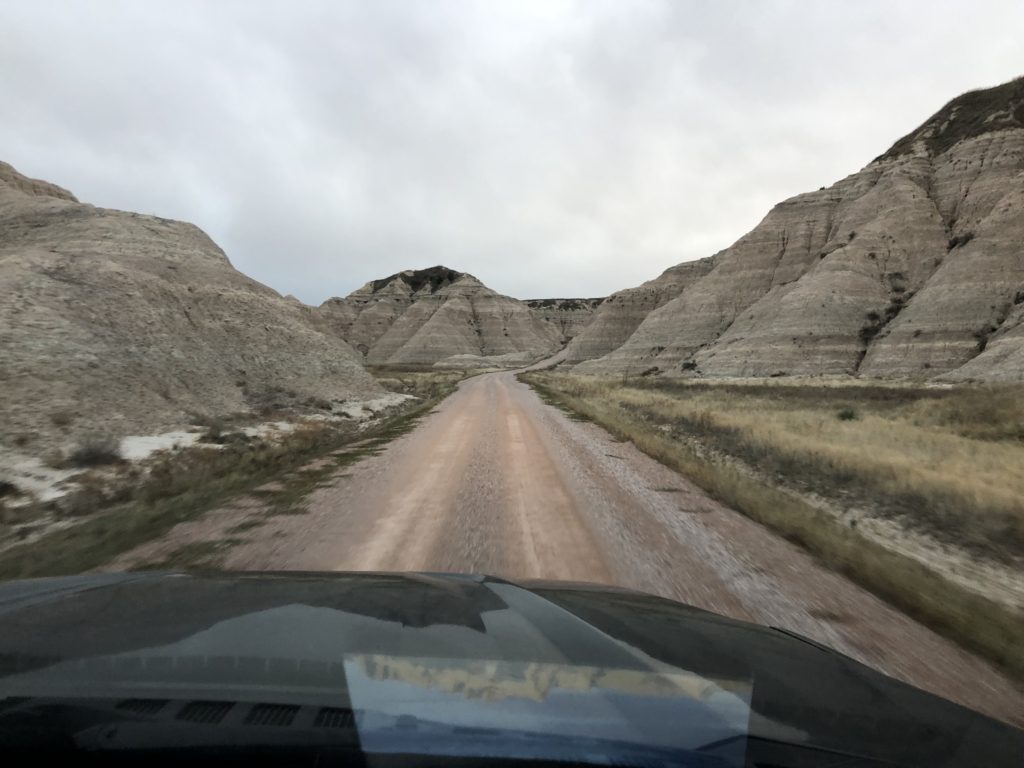
Wind Cave National Park…where the prairie meets the hills and trees.
We camped at Elk Mountain Campground inside the park. We were the only ones there.
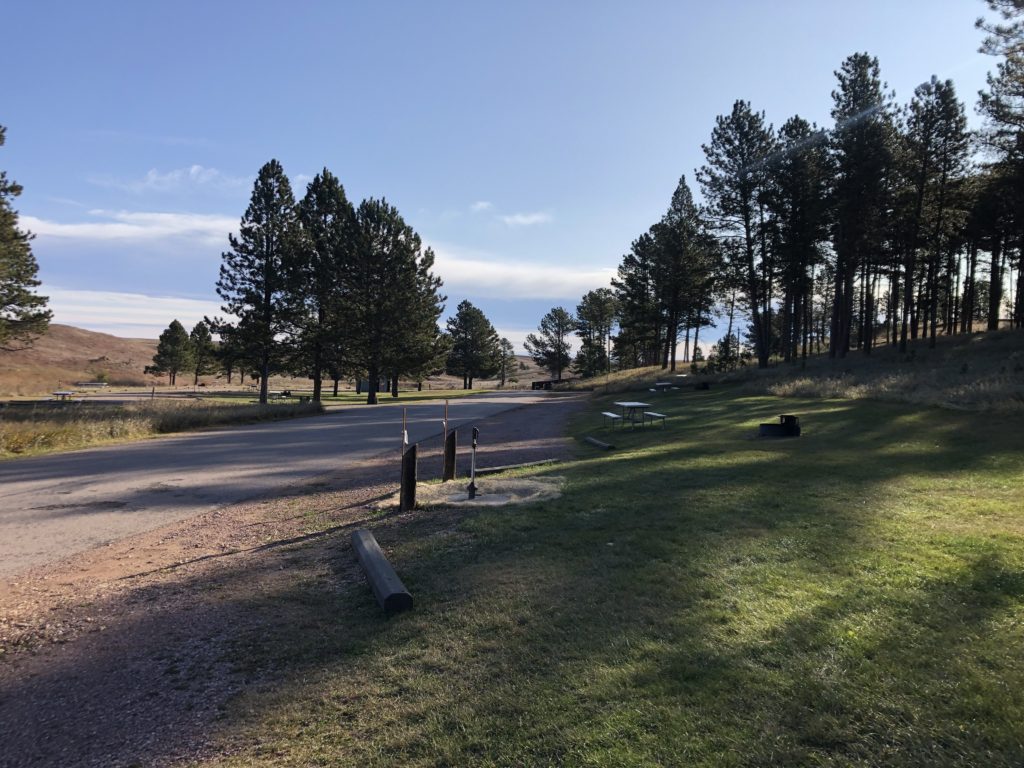
We actually went on a really nice 5 mile hike to explore the area. Watching Dancing with the Wolves with the girls last night helped me appreciate all the prairie grasses 🙂
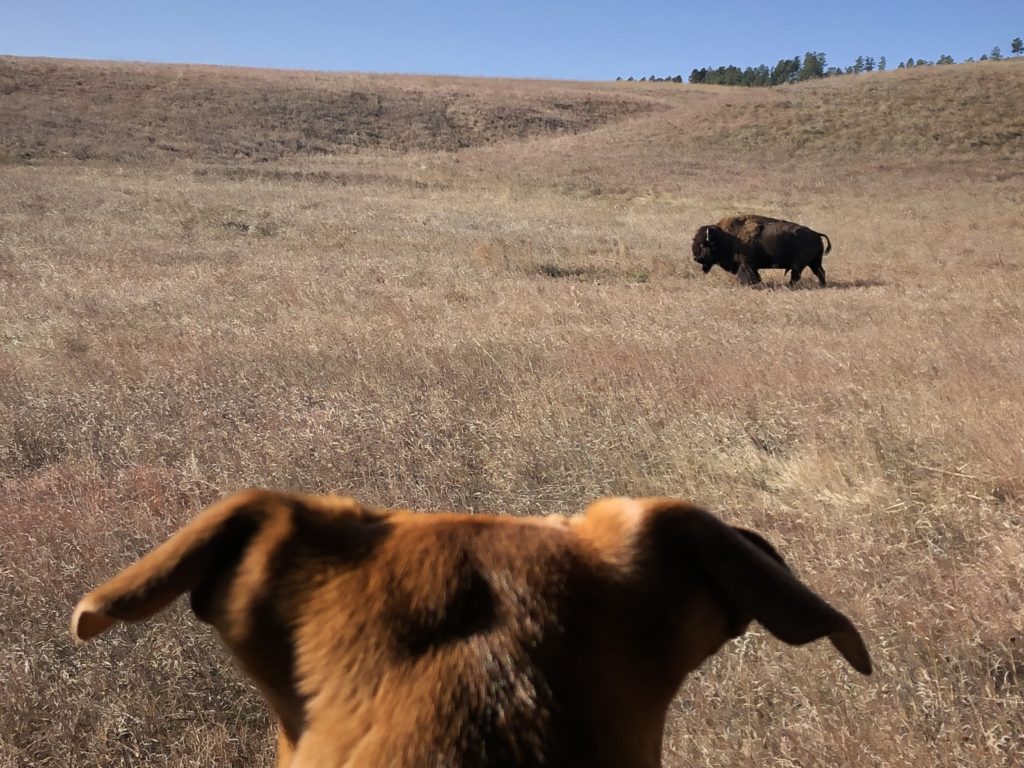
We took the Centennial Trail to the Highland Creek Trail to the Lookout Trail through prairie grass and ponderosa pine forest and even found another wind cave tunnel.
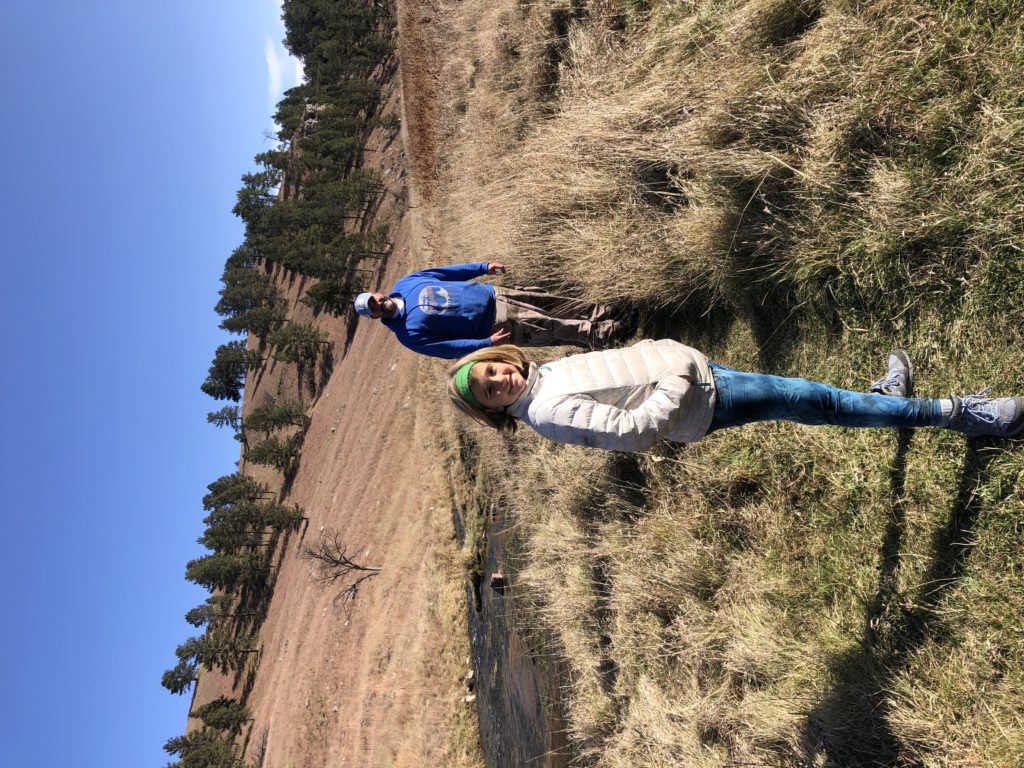
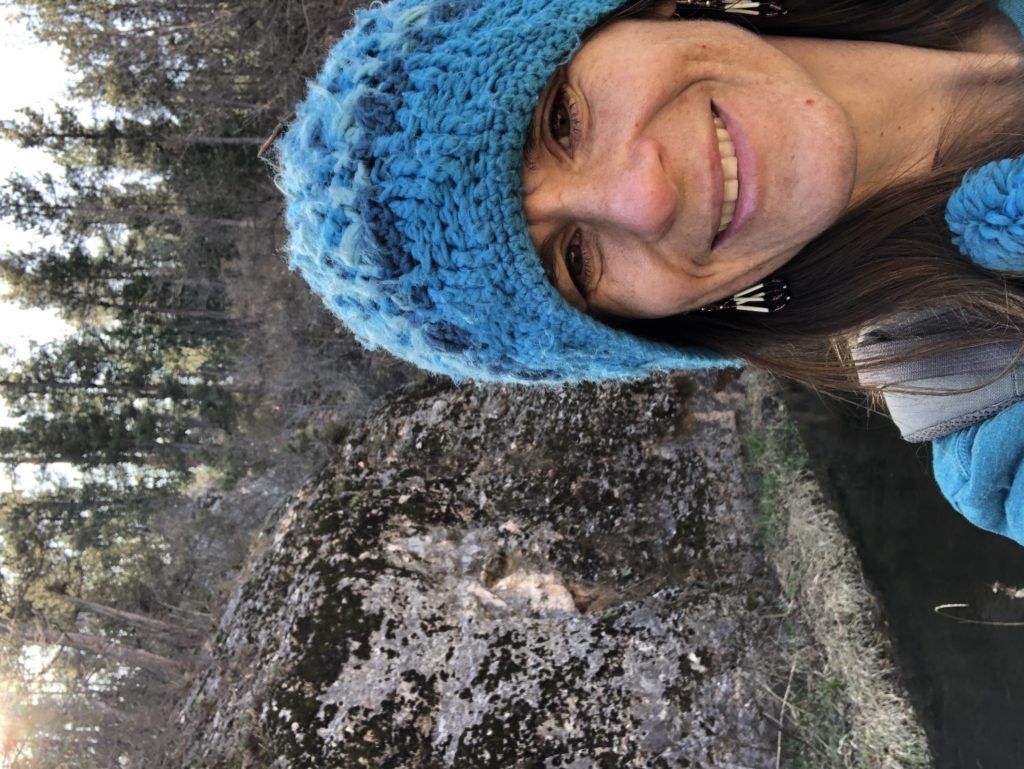
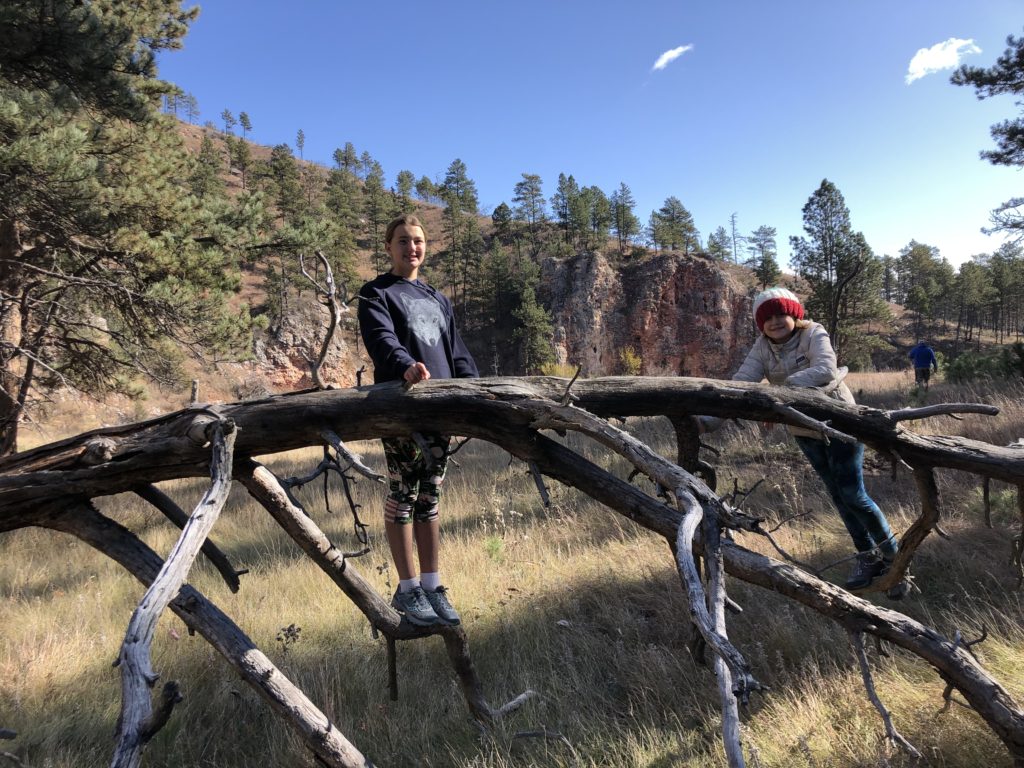
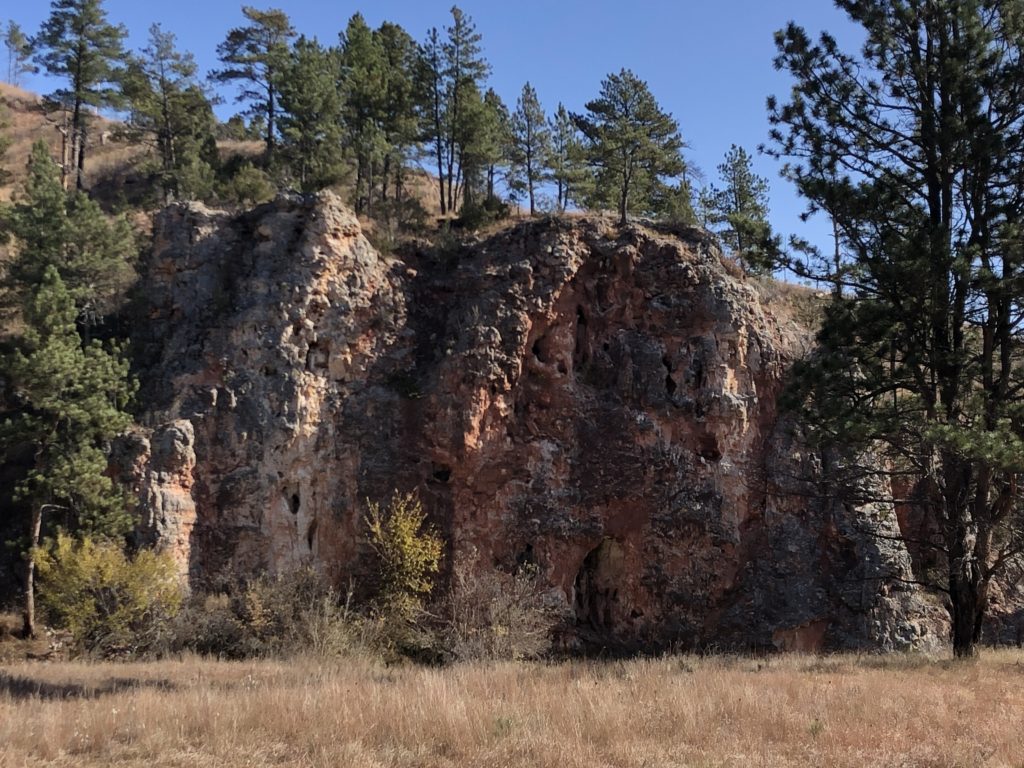
Prairie dogs DO NOT drink any water. They get all their water from the prairie grasses. Many animals prey upon the prairie dogs in the area, foxes, coyotes, badgers, snakes, birds. Another animal is the black-footed ferret which is the similar size as the prairie dogs. The black-footed ferret is endangered and without the prairie dogs they are in danger of going extinct.
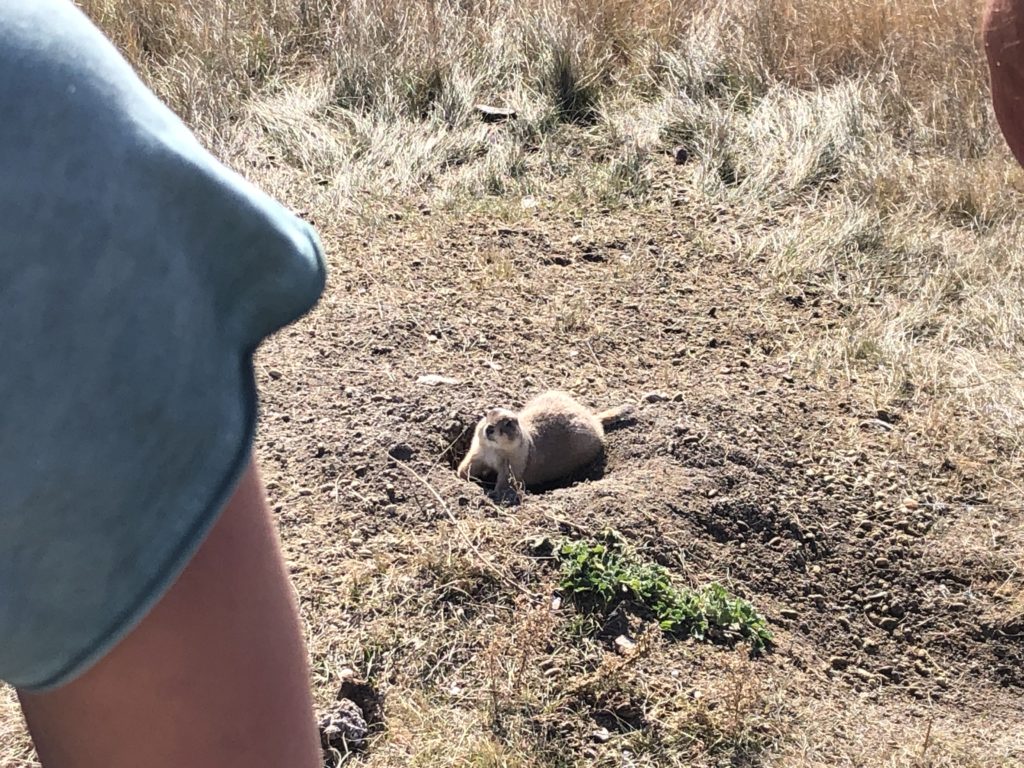
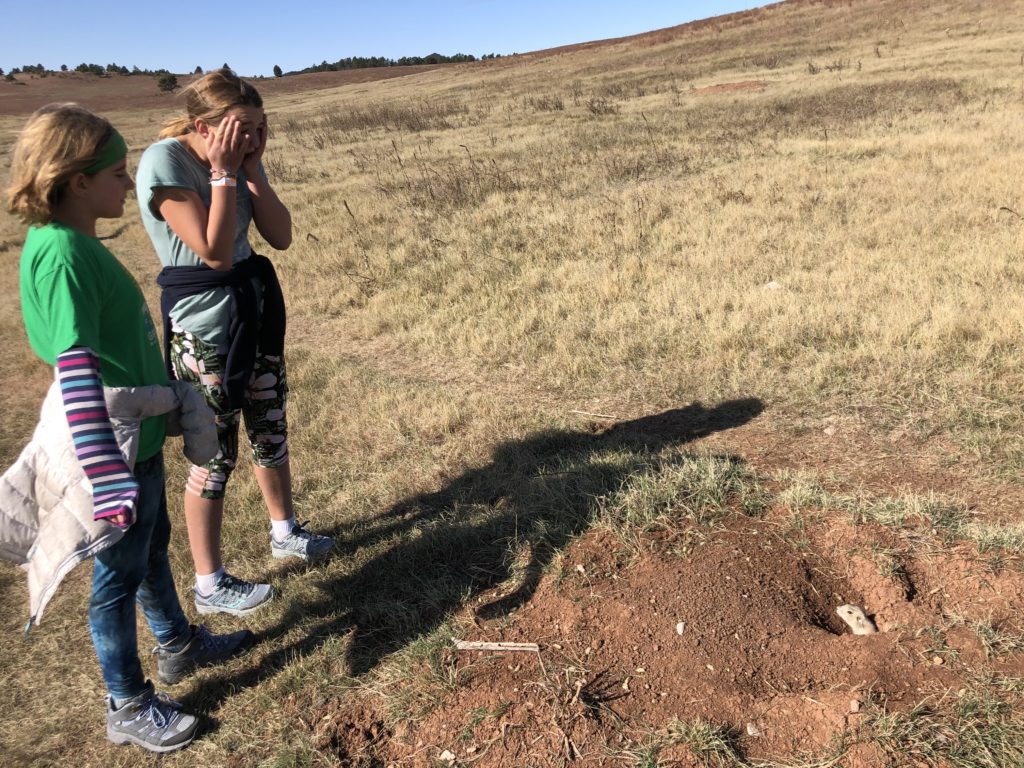
The prairie marches on…
Prairie grasses are adapted to the hot, dry summers and the cold, dry winters. And the CONSTANT wind. They are even tough enough so that when bison eat them down to the ground or they are burned down from prairie fires, they can grow again from its core. The bison till up the soil allowing air and moisture to help the soil around the grasses. The bison also picks up the seeds with its tail and hide and helps distribute grass seeds around the prairie.
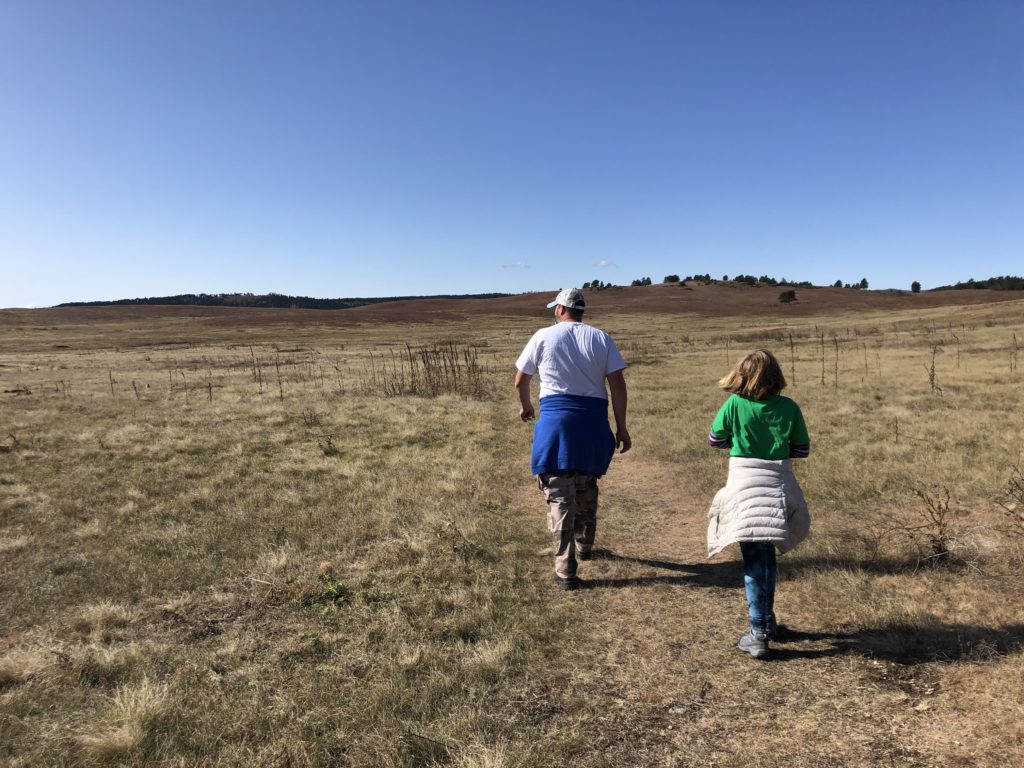
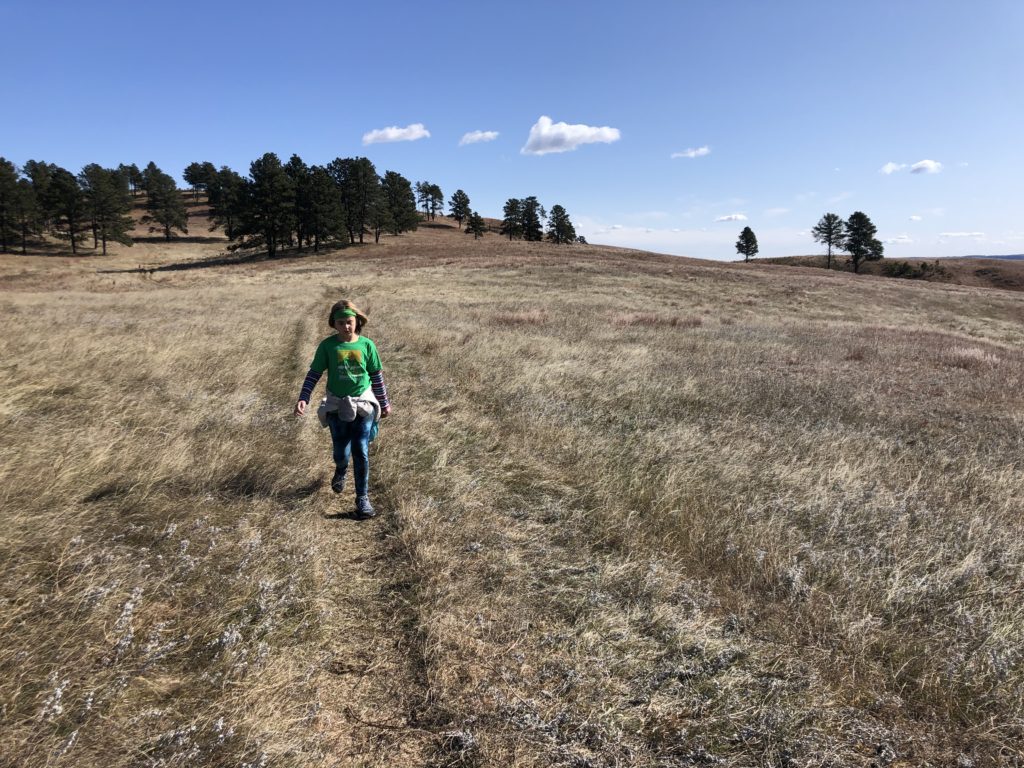
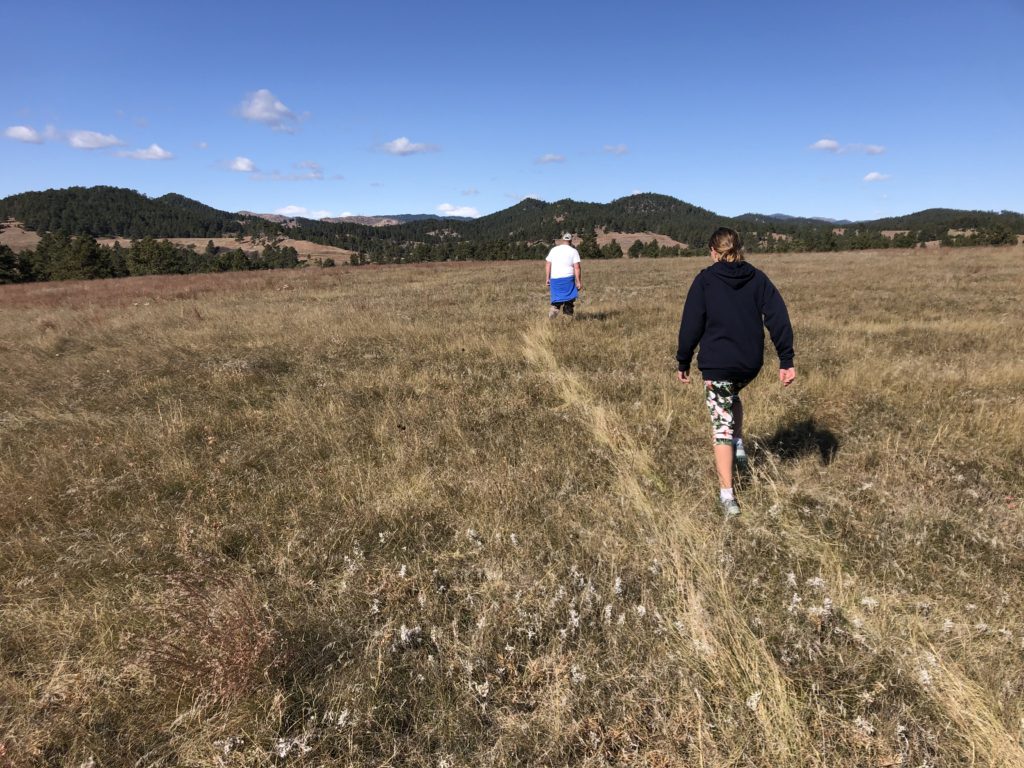
The girls made 2 scientific discoveries with their eyeballs.
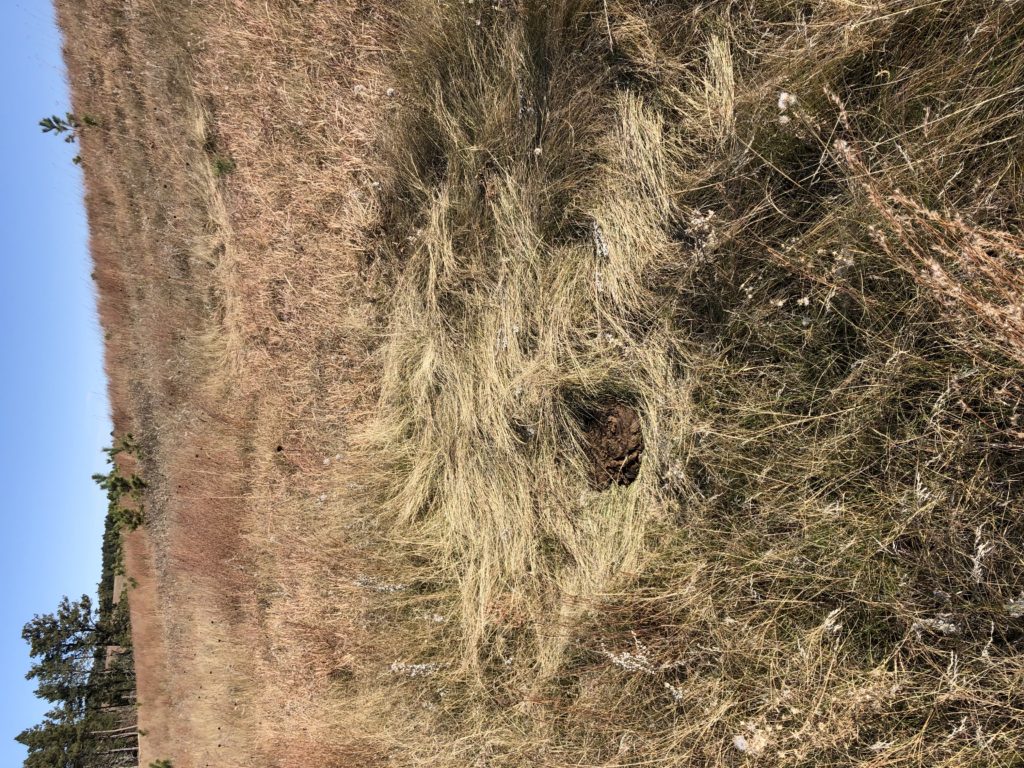
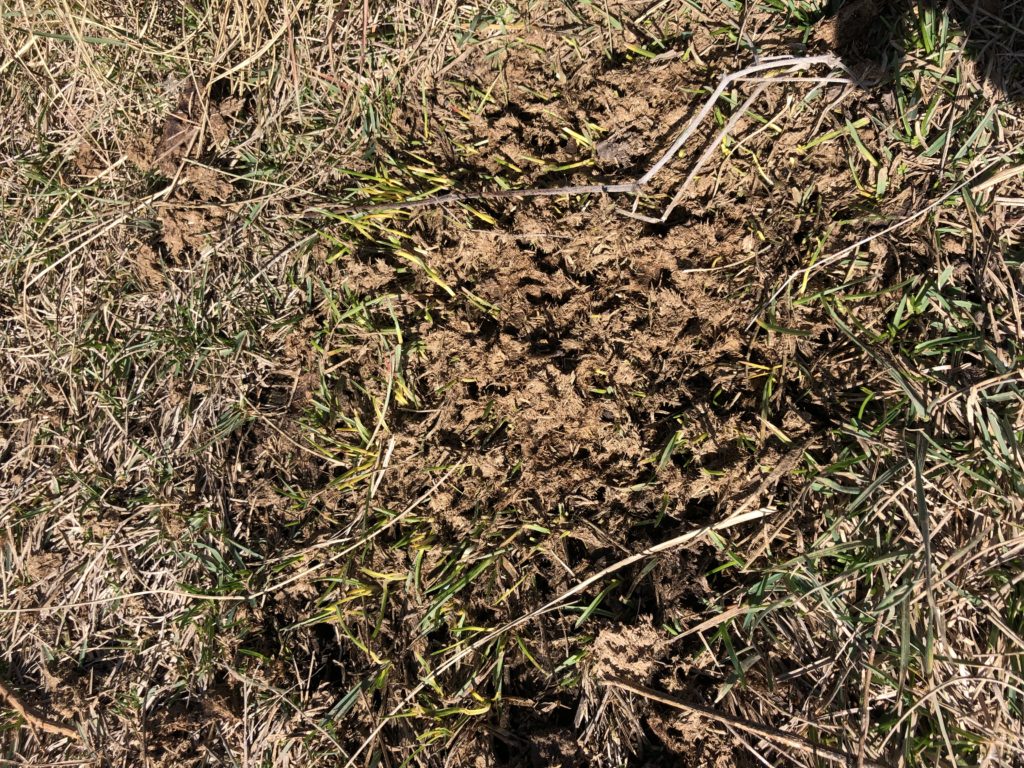
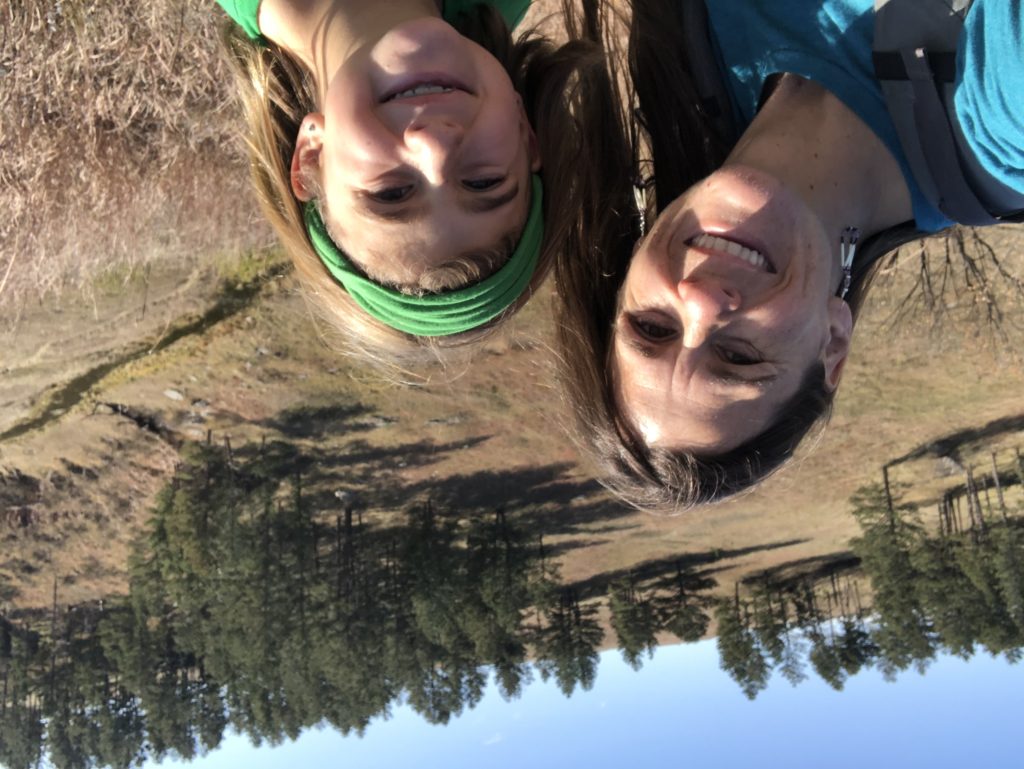
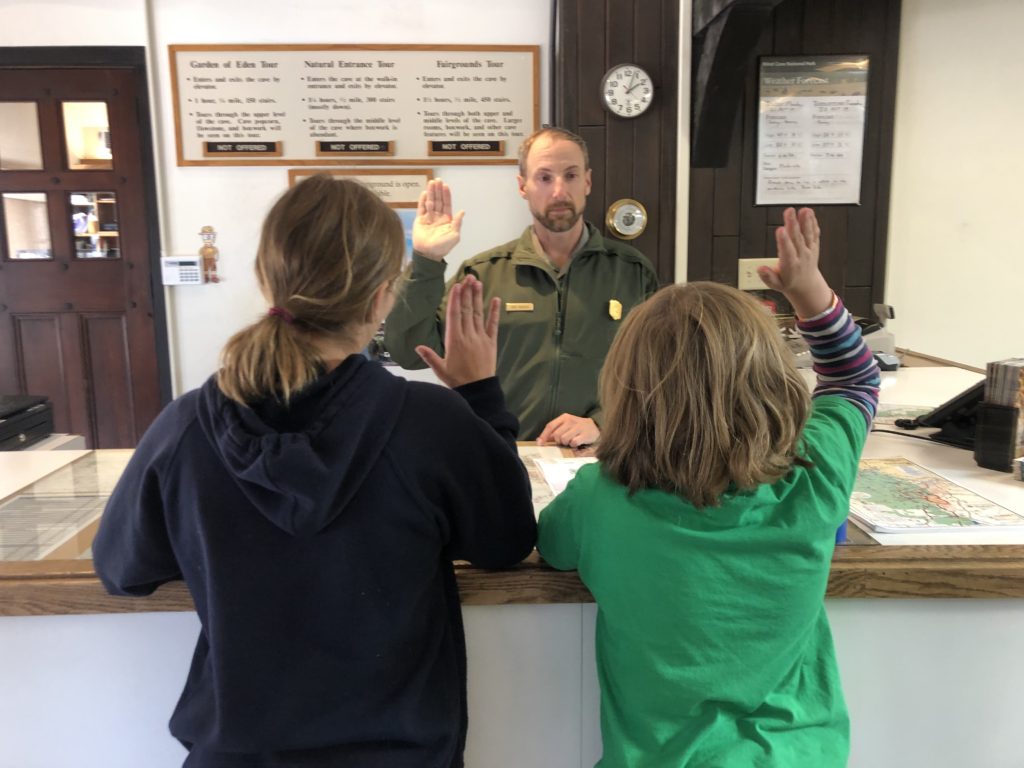
So we woke up to snow. (it was supposed to be rain starting at 11am)…so quickly packed up and got out of there (so wouldn’t have to put on chains) and went south 30 min.



Made it to our 8th National Park. Wind Cave National Park.






We went to the visitor center, saw the movie, and checked out the natural entrance to the wind cave. You could really feel and hear the wind rushing out of there.


Wind Cave is the 7th national Park to be established in 1903 by Teddy Roosevelt and was the first national park to be established because of a cave.Wind Cave got its name because it is a very large cave and has very few openings so you often hear wind rushing in or out of the cave due to the pressure differential.
The cave is closed so we can not check it out. The elevator has been down since July.

You could feel the storm moving towards us so we went another 15 minutes south to Hot Springs, South Dakota and check out the local warm water pools there. It was a fun pool with two indoor waterslides, basketball, steam rooms, and gymnastics rings. The coolest thing about this pool was it had actual river rocks as its floor.




We took a break from swimming to go to the Mammoth Dig Site in Hot Springs.
The Mammoth Site in Hot Springs South Dakota is an active digging site. It was a large sinkhole where the animals went looking for food and/or water, got trapped, and couldn’t get out. It is the largest site of Columbia’s mammoths. It is also the only site where Columbian mammoths and wooly mammoths have been found together. They have also found the prehistoric short nosed bear, which just looks scary.







we went back to Evans Plunge for a quick swim before we drove back up to Wind Cave and camped inside the park.
Oh and then we watched Dances with Wolves with the girls. Here’s Vera with tatanka

Another day of not moving. We really like Custer State Park, which is located in the Black Hills, Pahá Sápa, in Lakota. It was given the name black hills because they were covered in ponderosa pines and looked “black” from a distance. The ponderosa pine trees and the granite gave it a similar feel as to the Tahoe area.
We basically hung out at camp, went bike riding, fishing (although we are still at zero luck on the fish catching), made rollie pollies (the Wolinski special) and enjoyed a campfire. It was a beautiful clear sunny day and it was nice to just stay put.







We return in the morning to do the audio tour and walk around Mount Rushmore up close. It was nice we were here yesterday evening after everything was closed because there were significantly less people. It’s kind of crazy on a midweek day in October how many people are here. I mean I guess we are, but still….
Can you name the 4 Presidents featured on the Mount Rushmore National Memorial? And guess why they were picked to be a part of this memorial?

Mount Rushmore National Memorial was sculpted by Gutzon Borglum. The idea came from a historian, Doane Robinson, to promote tourism in South Dakota. He originally wanted American West heroes such as Lewis & Clark and Buffalo Bill Cody, but Borglum though Presidents would have wider appeal. He started the project in 1927 and the memorial was finished in October 1941. Unfortunately Borglum died in March 1941 so he was not there to see the the project to completion. His son Lincoln completed the project. Originally it was supposed to display the presidents to their waist, but due to lack of funding and the fact that Gutzon died, it remained the way it is today.
President George Washington. This was an easy pick. He was our 1st president. He was president from 1789-1897. He represented the nation’s ”birth”.



President Abraham Lincoln was also an easy pick. Borglum was a big fan of President Lincoln. He even named his first son after him. Lincoln is our 16th President from 1861-1865. President Lincoln was to represent the “preservation” of our country during the Civil War.


Thomas Jefferson, our 3rd President. He was picked to represent the “growth” of our country. 1801-1809.


Theodore Roosevelt. Our 26th president. 1901-1909. The most controversial figure for the memorial. He was a fairly recent president and there was a bit of controversy as whether not he should have been placed in the memorial. The crux of the scandal was that Teddy Roosevelt was good friends with the sculptor Gutzon Borglum. According to the audio tour, he was picked to represent the “development” of our country.


We left a giant rock memorial that had been completed to go to a rock memorial that was in the beginning stages of its completion, the Crazy Horse Memorial just about 20 miles away also in the Black Hills.
There was a lot of initial controversy over Mount Rushmore. It is located in the Black Hills. (I was recently told anywhere you see ponderosa pines, you are in the black hills). The Black Hills were originally gifted to the Lakota people via the Treaty of Fort Laramie in 1868, but the U.S. took it back in 1876 after they found gold there. The U.S. then deciding to put giant faces of U.S. Presidents was very difficult to the Lakota people for 2 reasons, 1. it was on land “taken away” from them and subsequently heroes of American culture that forced the indigenous people from their land was erected, but even more so 2. the “Black Hills” in particular are considered sacred ground.
This is the part of history that I have never been aware of or cared to seek out before, but grateful for this journey to be able to see beauty in all the ways. There is beauty in seeing this rock sculpture as a work of art. Because I feel like it is…a work of art in itself And what a feat. But there is also beauty (albeit the sad parts of beauty) in the understanding of history, the background, and the controversy.
So we went to the memorial honoring Crazy Horse, a Native American, and guess what, controversy there too. In response to Mount Rushmore a Lakota chief Henry Standing Bear commissioned Korczak Ziolkowski to carve the Crazy Horse monument in 1948. “My fellow chiefs and I would like the white man to know the red man has great heroes, too.” It would feature Crazy Horse on his horse pointing to his lands which are “my lands are where my dead lie buried.” Crazy Horse’s family feels that Standing Bear never had the right to ask Ziolkowski to do this and the monument is a “desecration of the landscape and environment of the Black Hills, and of the ideals of Crazy Horse himself”. In addition, Crazy Horse was very aloof and humble and made a point to never having his picture taken. “…will you imprison my shadow as well?…”.
Crazy Horse is one of the most notable Native Americans of his time. He was never a chief, but was a great warrior of the Lakota and very much respected. He has been credited to the warrior who led the defeat of the 7th cavalry at the Battle of Little Big Horn and along with Sitting Bull took up arms agains the U.S. Army to preserve the traditional way of life of the Lakota people. “…his life shows how great he was, because he remained himself from the moment of his birth to the moment he died; because [though] he may have surrendered, … he was never defeated in battle; because, although he was killed, even the Army admitted he was never captured. His dislike of the oncoming civilization was prophetic. Unlike many people all over the world, when he met white men he was not diminished by the encounter.”
At first the Native Americans were split about the project, but because of the for profit business the Ziolkowski family has made of the monument, the lack of Native Americans working at the site and museum, most feel as though the family is no longer honoring Crazy Horse, but profiting from him. The project started back in 1948 and is very far from completion. The site is owned entirely by the Ziolkowski family, is run as a non-profit, and no money being donated to the local tribes.
Once completed it will be the 2nd largest statue in the world measuring at 563’ high by 643’ wide. Crazy Horse’s fade will he 83’ high. (The heads at Mount Rushmore are 60’ tall). Beyond the controversy it was neat to see it in its initial stage and and I will come back in another 30 years to see where it’s done.






We have more to learn about Crazy Horse and the Native American tribes of this area that is for certain…so forgive me…because we are learning as we are going…and its A LOT of information to take in.

We just stopped in for a quick look and sunset and then camping out tonight and will return for the audio tour tomorrow




Yesterday was a lot of fun Vera has a great birthday, we all did. We slept in and enjoyed the hotel room this morning, even Daisy got a shower.
Vera got a much needed bike upgrade for her birthday and we went on our first official mountain bike trail ride as a family. Proud of both the girls, they did switchbacks going up the hill for a ways and came upon dinosaur park at the top of the hill arthur endosperm trails. Edwin and I were contemplating finding a way down via streets to avoid going downhill but the girls were little rockstars and no one went head over tea kettle. Overall it was a great ride and a huge confidence booster for all.





Powered by WordPress & Theme by Anders Norén